Forums
- Forums
- Axis And Allies Forum
- General Discussion
- Aviation News
Aviation News
Post a reply
- Go to Next topic
- Go to Welcome
- Go to Introduce Yourself
- Go to General Discussion
- Go to Screenshots, Images and Videos
- Go to Off topic
- Go to Works in Progress
- Go to Skinning Tips / Tutorials
- Go to Skin Requests
- Go to IJAAF Library
- Go to Luftwaffe Library
- Go to RAF Library
- Go to USAAF / USN Library
- Go to Misc Library
- Go to The Ops Room
- Go to Made in Germany
- Go to Campaigns and Missions
- Go to Works in Progress
- Go to Juri's Air-Raid Shelter
- Go to Campaigns and Missions
- Go to Works in Progress
- Go to Skinpacks
- Go to External Projects Discussion
- Go to Books & Resources
-
 Main AdminEVERETT, Wash., May 16, 2016 /PRNewswire/ -- Boeing [NYSE:BA] and China Airlines today celebrated the delivery of the world's first co-branded 777 during a ceremony in Everett, marking the carrier's 10th 777-300ER (Extended Range).
Main AdminEVERETT, Wash., May 16, 2016 /PRNewswire/ -- Boeing [NYSE:BA] and China Airlines today celebrated the delivery of the world's first co-branded 777 during a ceremony in Everett, marking the carrier's 10th 777-300ER (Extended Range).
"We are delighted to celebrate 100 years of Boeing by working together with Boeing to accomplish the first co-branded livery 777-300ER," said Steve Chang, Vice President of Corporate Planning, China Airlines. "This is our 10th 777 from Boeing and since our first 777 entered into service in 2014, we have been exceedingly satisfied with its outstanding performance which was further affirmed by our happy passengers."
In 2004, China Airlines became the first airline in the world to use Boeing's co-branded livery on its latest 747-400. That airplane was nicknamed the 'Blue Whale' by the airline and was the first co-branded twin-aisle airplane in the world.
"The Boeing Company is truly honored to celebrate yet another milestone delivery with China Airlines," said Ray Conner, President and CEO of Boeing Commercial Airplanes. "It is fitting that the first co-branded 777 is delivered to China Airlines, especially as Boeing celebrates its centennial this year. The airplane is the perfect symbol our enduring 50+ years of partnership."
With this delivery, China Airlines now operates a fleet of 10 777-300ERs and continues to bolster its long-haul routes to the North American and European markets. Taiwan's flag carrier also introduced a new, state-of-the-art cabin interior onboard its 777-300ERs designed by award-winning Taiwanese architect Ray Chen.
Each of the airline's 10 777-300ERs are configured to seat 358 passengers in a three-class layout highlighted by the new 'Family Couch' seats in economy class. China Airlines is the only airline in North Asia to feature the Family Couch seats, where three economy seats convert into a flat surface to provide passengers with added rest and relaxation.
The Boeing 777 is the world's most successful twin-engine, long-haul airplane. The 777-300ER is equipped with the world's most powerful GE90-115B commercial jet engine, and can travel, with a standard three class configuration, a maximum range of 7,825 nautical miles (14,490 kilometers).
Headquartered in Taoyuan, China Airlines is the largest carrier in Taiwan with a Group fleet of nearly 90 airplanes. The airline currently serves more than 13 million passengers annually to over 118 destinations across the globe.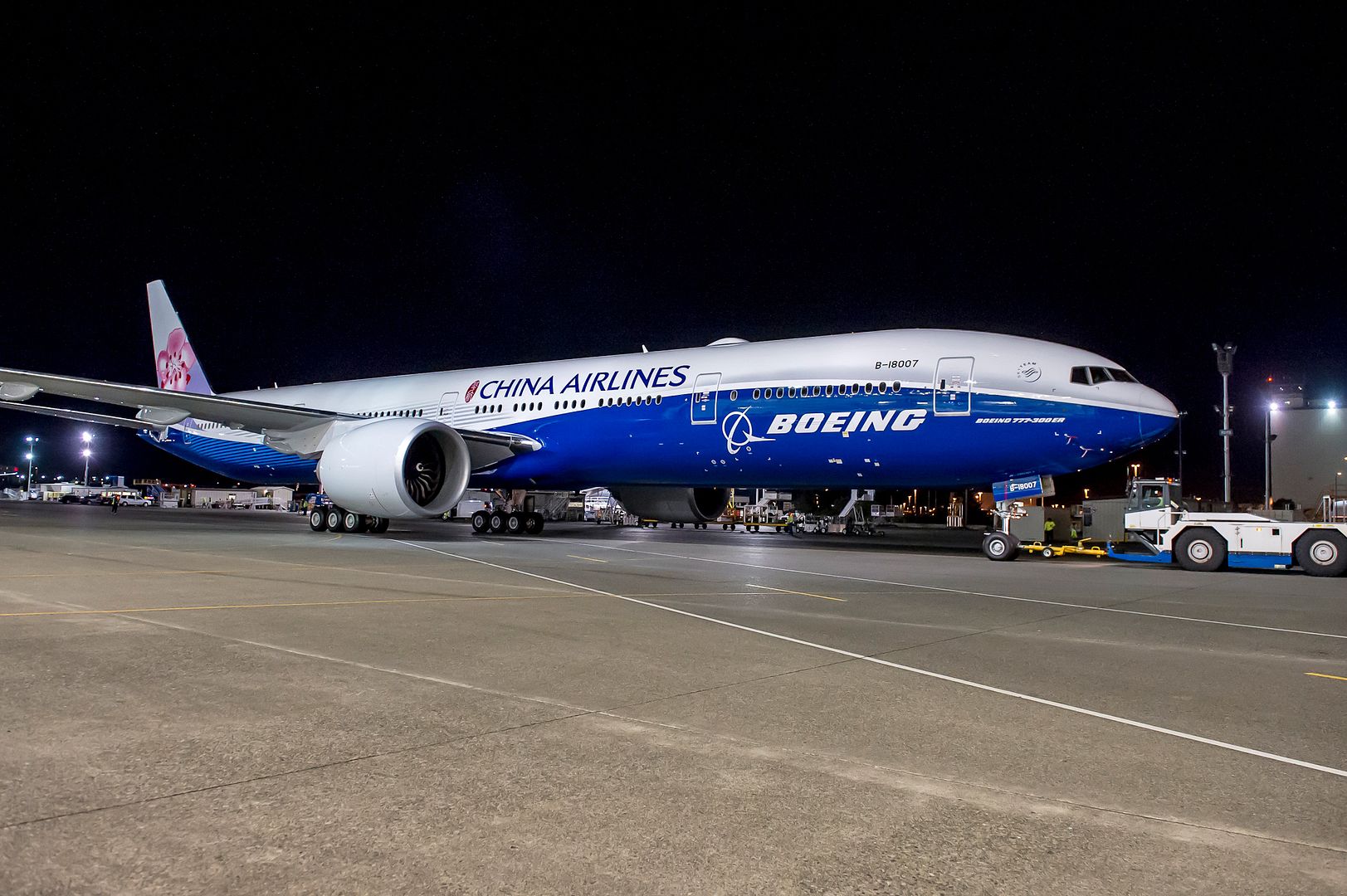
-
 Main AdminTraditional meeting of NATO units with the tiger emblem , the NATO Tiger Meet 2016 ,will be held this year at the base of Zaragoza in Spain, until 27 May.
Main AdminTraditional meeting of NATO units with the tiger emblem , the NATO Tiger Meet 2016 ,will be held this year at the base of Zaragoza in Spain, until 27 May.
In addition to the sharing of experience among the participants, the NTM is also an opportunity to reward the best painting of each aircraft detachment , on the theme of the tiger.
Photo L.Marzin/Arm?e de l'air
HANSCOM AIR FORCE BASE, Mass. (AFNS) -- A recent successful test flight of an upgraded Flight Management System Suite for the E-3 Sentry (AWACS) provides the warfighter with enhanced battle management capabilities.
AWACS aircraft provide an integrated command and control battle management, surveillance, target detection, and tracking platform. The aircraft provides an accurate, real-time picture of the battlespace to the Joint Air Operations Center.
The upgrade provides three principal benefits to the warfighter. It ensures compliance with current and future air traffic control requirements, giving the aircraft broader access to conduct battle management operations in airspace around the world. It resolves non-sustainable analog equipment with commercially viable digital avionics, replacing 1970s-era systems; and it also reduces cockpit crew personnel from four to three by automating the navigation function.
"The cockpit upgrade will make the AWACS fleet operationally ready for worldwide deployments, meeting all the new air traffic management mandates for the ever-increasingly congested international airspace -- while reducing the logistical footprint and increasing cost savings," said Collin Manzo, the engineering and manufacturing development program manager.
The test flight took place on April 20 at Boeing Field in Kent, Washington, as part of the Air Force's CNS/ATM DRAGON, program, which stands for Communication, Navigation and Surveillance/Air Traffic Management Diminishing Manufacturing Sources Replacement of Avionics for Global Operations and Navigation. Officials have said the benefits springboard the AWACS platform into the future while reducing overall system maintenance and sustainability costs.
"The modernized flight deck is more user-intuitive, with full-color glass displays that enable customizable engine, navigation and radar information," said Gwen LaMuro, the DRAGON program manager. "This enhanced avionics system suite utilizes commercial, off-the-shelf equipment which eliminates diminishing manufacturing source issues, provides a commercially available replacement solution and reduces sustainability risk to the AWACS platform."
The program now enters the flight test qualification phase to prove out any unique Air Force requirements. Following that, program managers anticipate delivery of modified D1 aircraft to the 552nd Air Control Wing at Tinker Air Force Base, Oklahoma, in May 2017. There, the aircraft will undergo government operation test and evaluation and then production modification for the rest of the fleet, to be accomplished by the depot staff at Tinker AFB beginning in 2018.
The CNS/ATM DRAGON program is a cooperative program between the U.S. and NATO. NATO's first aircraft, known as N1, completed testing in April and is nearing completion of the full EMD phase.
"This program is a great example of international cooperation benefiting both partners, as the U.S. and NATO AWACS fleets are about 95 percent common in design," LaMuro said. "We have incorporated the efficiencies and learned lessons from the NATO N1 aircraft in the U.S. Air Force aircraft design, reducing the overall shared costs by tens of millions of dollars for both stakeholders. This truly culminates a successful relationship between NATO and the U.S. and these modifications ensure the critical capability AWACS provides to our warfighters and allies around the world."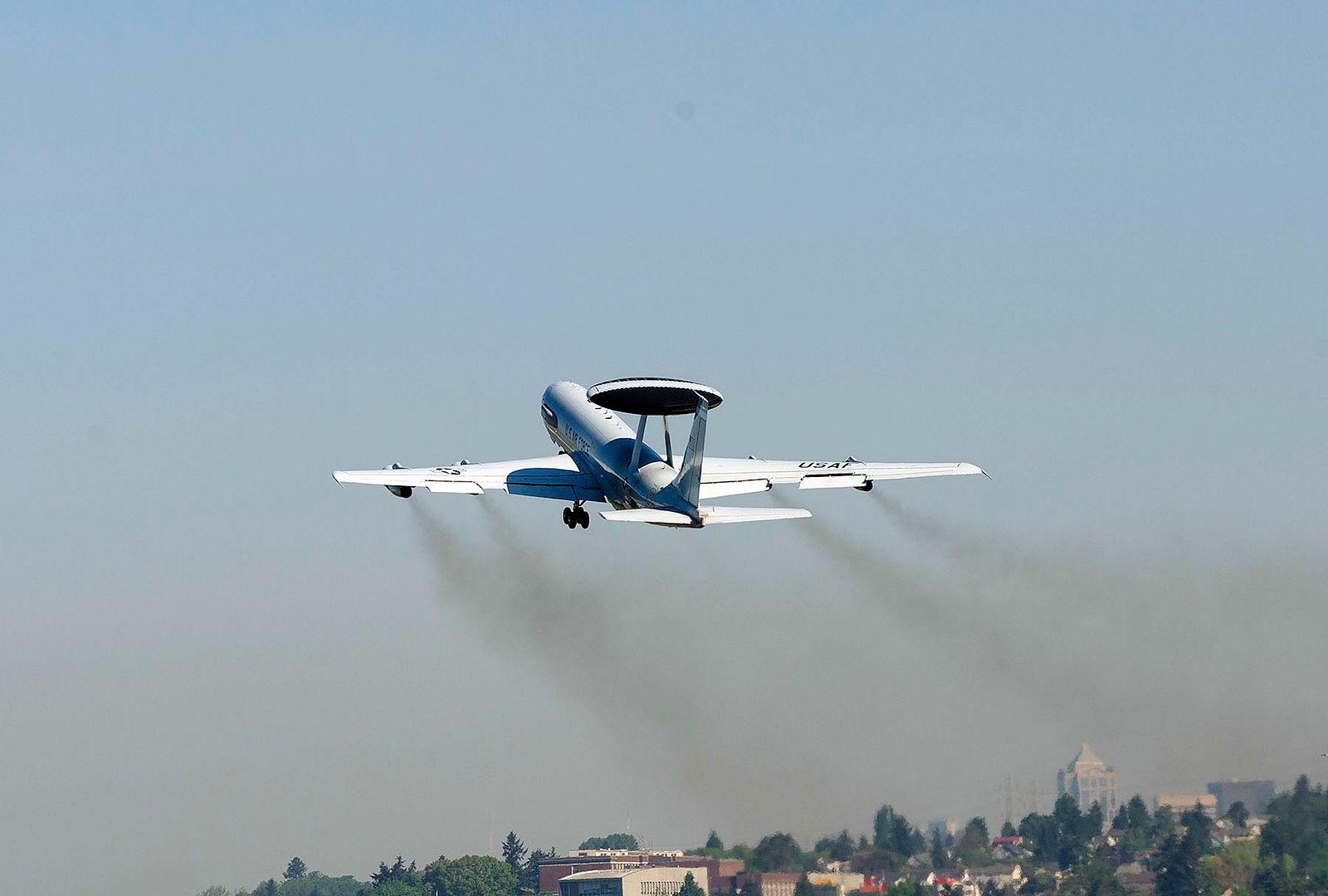
OKLAHOMA CITY, May 17, 2016 ? Boeing [NYSE: BA] will continue maintaining and supporting the U.S. Air Force?s C-32A and C-40BC executive aircraft through a new seven-year, $319 million contract awarded in March.
The Air Force uses the C-32A and C-40BC, which are based on the Boeing 757 and 737 passenger planes, to transport the vice president, cabinet members and military commanders among others. Boeing has supported the aircraft since first delivery in 1998 and 2001.
?The Air Force can rely on Boeing anytime, anywhere in the world,? said Jerry Dunmire, Executive Transport Services & Support program director. ?We take great pride in keeping these essential aircraft ready and updated with the latest technologies.?
The C-32 and C-40 are among the many military derivatives of commercial airplanes that Boeing has built for U.S. and international customers, offering affordable adaptations of proven airframes and existing worldwide support for military missions.
U.S. leaders have flown on aircraft from Boeing and its heritage companies since the Boeing 314 and Douglas C-54 were delivered during World War II.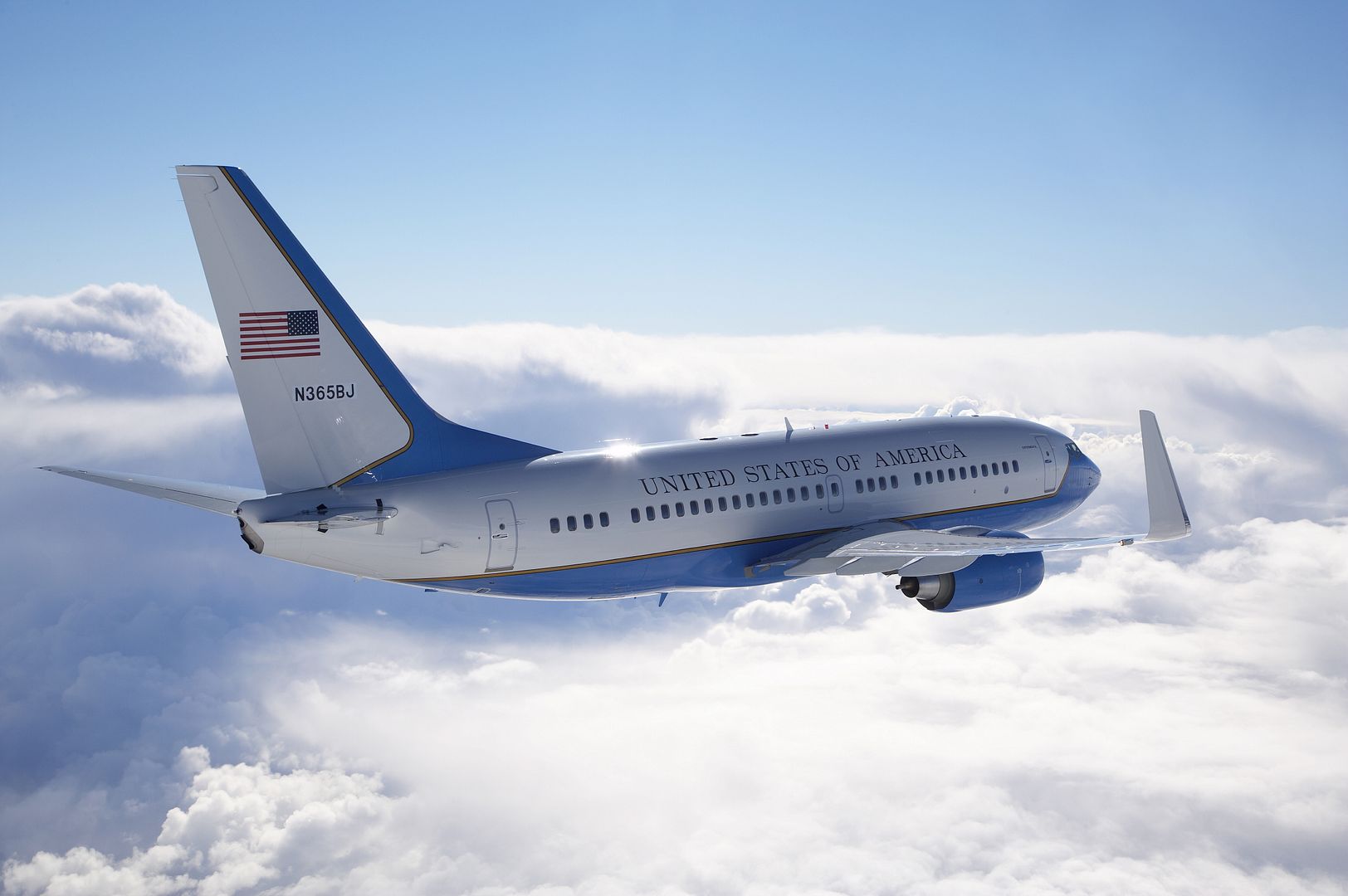
17 May 2016 Press Release
The first delivery of an A321 aircraft from the Airbus U.S. Manufacturing Facility to American Airlines took place today, May 17, in Mobile, Alabama. On hand for the occasion were executives from Airbus and American Airlines and representatives of the more than 350 employees at the facility.
Bob Lekites, Executive Vice President-Customers, Airbus Americas said, ?The relationship between American Airlines and Airbus is a long and successful collaboration to provide the most modern, fuel-efficient aircraft for both of our customers. American Airlines already operates the world?s largest fleet of Airbus aircraft and the largest A321 fleet. With this delivery, we are adding a very special aircraft to those already sporting the American livery ? an Airbus aircraft built here in the USA. This is the first of many American Airlines airplanes to be delivered from Mobile, and we are proud it will join a growing, thriving fleet.?
David Seymour, Senior Vice President-Integrated Operations for American Airlines said, ?Having Airbus produce its world-class aircraft in the United States has simplified our delivery process. It?s an honor to take delivery of this A321 today, and we thank everyone working in this facility for producing a high-quality aircraft for us.?
Airbus announced its commitment to build a single-aisle assembly line in Mobile, Alabama in 2012, and less than one year later, broke ground on the $600 million facility. The ceremonial inauguration of the plant took place in September 2015. The aircraft delivered today, an American Airlines A321, successfully had its first flight on April 19, 2016.
Airbus anticipates delivering four aircraft per month from the Mobile plant by the end of 2017. The initial deliveries will all be A320 Family aircraft with the Current Engine Option (CEO), but will begin transitioning to New Engine Option (NEO) derivatives in late 2017.
In addition to hundreds of new Airbus jobs the project has brought to the local community, the Mobile area has seen many Airbus suppliers open new facilities in the region, providing even more employment and a parallel boost to the local economy. Airbus is proud to boast that 87 percent of its new employees are from the Gulf Coast region, with nearly one third being U.S. military veterans.
Demonstrating the adage ?The Sun Never Sets on Airbus Manufacturing? ? Airbus aircraft are now produced around the clock, 24 hours a day, at facilities in: Mobile, Alabama; Hamburg, Germany; Toulouse, France; and Tianjin, China.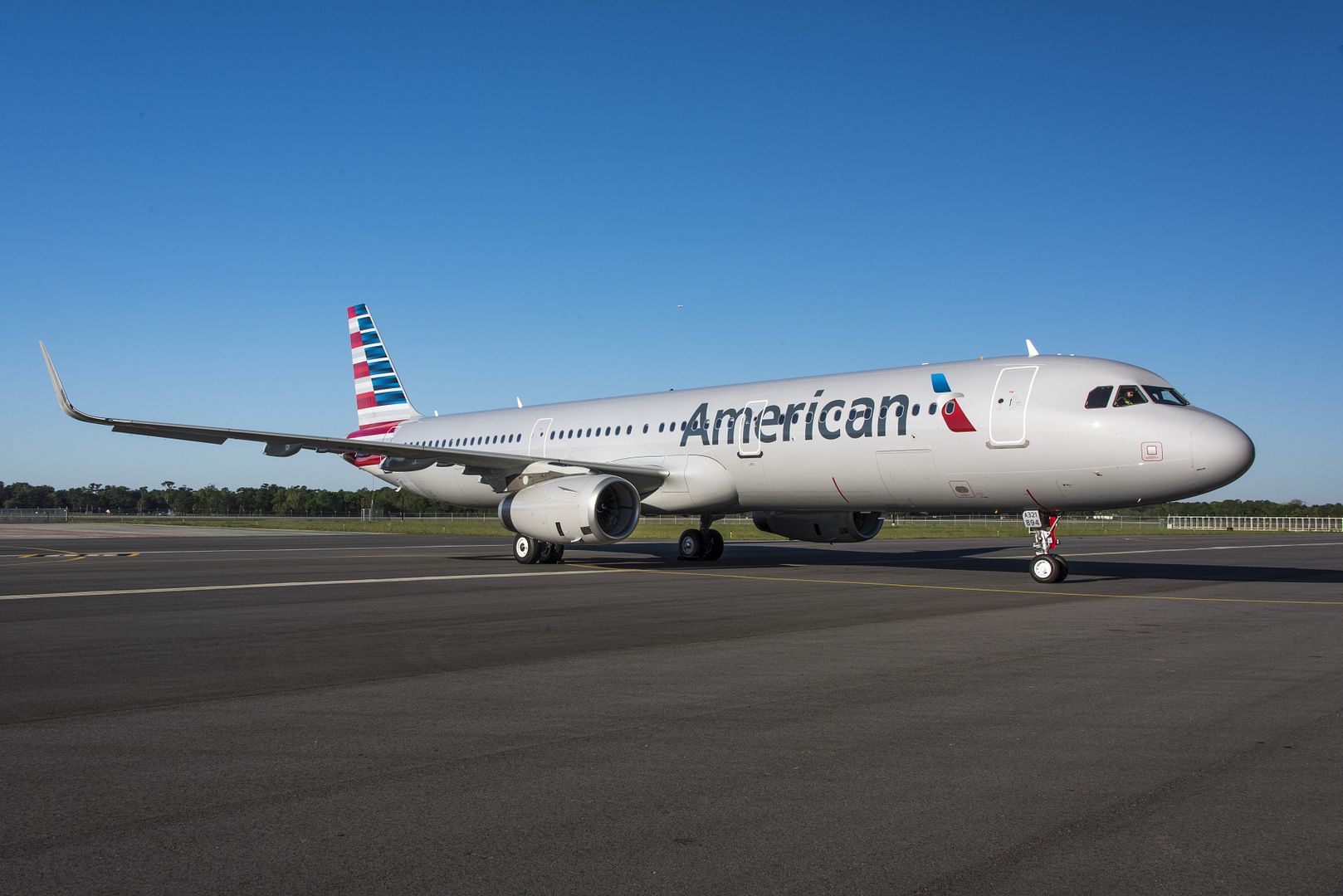
17 May 2016.
Marignane - Airbus Helicopters will participate in the international helicopter industry exhibition HeliRussia 2016 held in Moscow on May 19-21.
?Airbus Helicopters, as a leader with over 50% of the market share in the EMS segment, is ready to contribute to the development of the emerging market of emergency medical services in Russia,? said Emeric Lhomme, CEO of Airbus Helicopters Vostok. ?HeliRussia is a unique opportunity to present our specific solutions to the key market players and how they meet the demands of the Russian market? he added.
In February 2016 Airbus Helicopters and Ural Works of Civil Aviation (UWCA) signed an agreement on the licensed assembly of H135 helicopters at the Russian manufacturer's facility in Yekaterinburg. The H135 family is a global benchmark for EMS and medical evacuation with over 500 aircraft flying on this segment.
?The H135 fully corresponds to the needs of the rising EMS market in Russia. Airbus Helicopters is ready not only to invest in the development of this segment through the assembly partnership with UWCA, but also to share the experience and technological know-how with our Russian colleagues and partners? said Emeric Lhomme.
Airbus Helicopters will present a light twin-engine H135 helicopter operated by Austria's ?AMTC (?sterreichischer Automobil-, Motorrad- und Touring Club) on its booth. The aircraft, that can accommodate two pilots, two medical workers and one passenger on a stretcher and all the medical equipment necessary to providing intensive patient care during the flight, is actively used by the operator to perform EMS and evacuation missions.
Visitors of Airbus Helicopters booth are also invited to see a mock-up of the H160, the most recent development at Airbus Helicopters. This helicopter, incorporating 68 dedicated patents, combines form and function in a striking design. The H160 is tailored for a wide range of applications, including emergency medical services, oil and gas operations, public service, and private and business aviation.
Airbus Helicopters will present its vision of the development of the Russian EMS market during the 5th Interdepartmental scientific practical conference Air Ambulance & Medical Evacuation Conference 2016 on 19 May in the framework of the exhibition.
To learn more about Airbus Helicopters products visit booth D in Hall 1 in Crocus Expo at HeliRussia exhibition on May 19 ? 21, 2016
Photo Wolfgang Obrusnik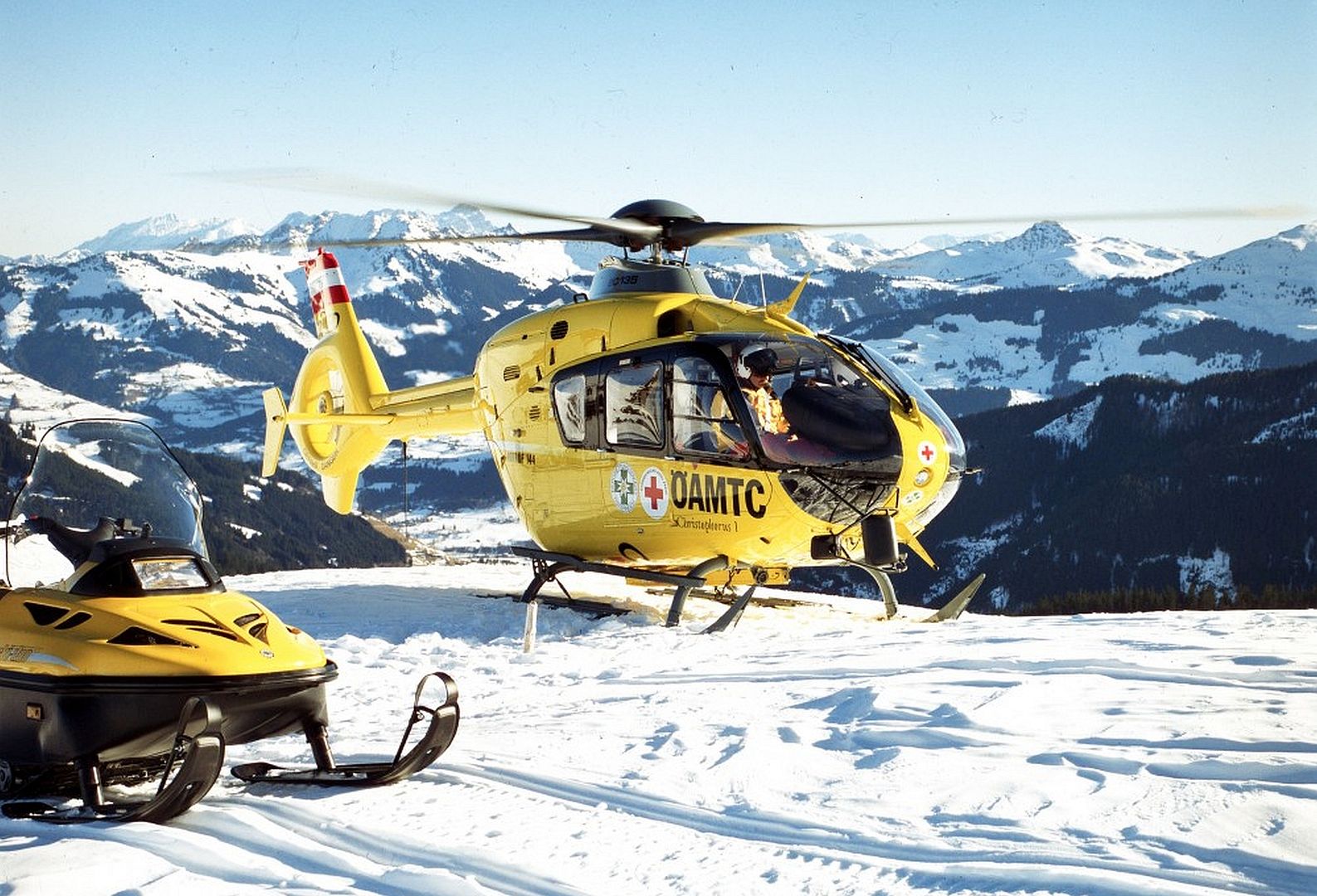
-
 Main Admin18 May 2016
Main Admin18 May 2016
News articles by date
On 15 Apr 16, the RAF deployed a Voyager aircraft to US Naval Air Station Patuxent River in support of Lightning II (F-35B) Air to Air Refuelling (AAR) trials.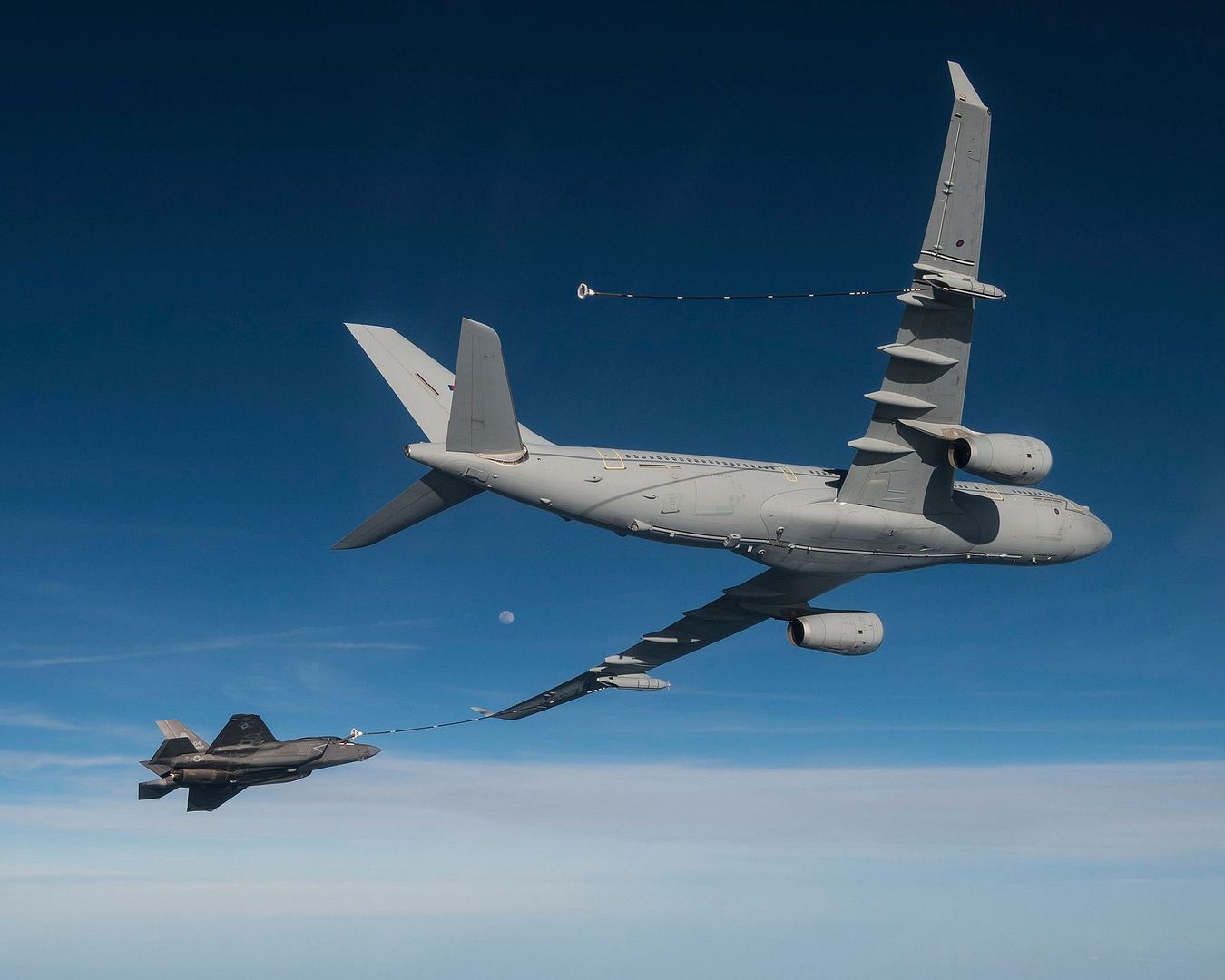
Approximately 20 flights are scheduled during the test period, of which 5 have been successfully completed to date, with the final flight scheduled during mid-June.
The trials will include a number of AAR flights to assess both the Wing pods and the Fuselage Refuelling Unit (central refuelling point). The flight tests will initially be conducted as ?dry contacts? before moving into ?fuel passing? at various points throughout the flight envelope.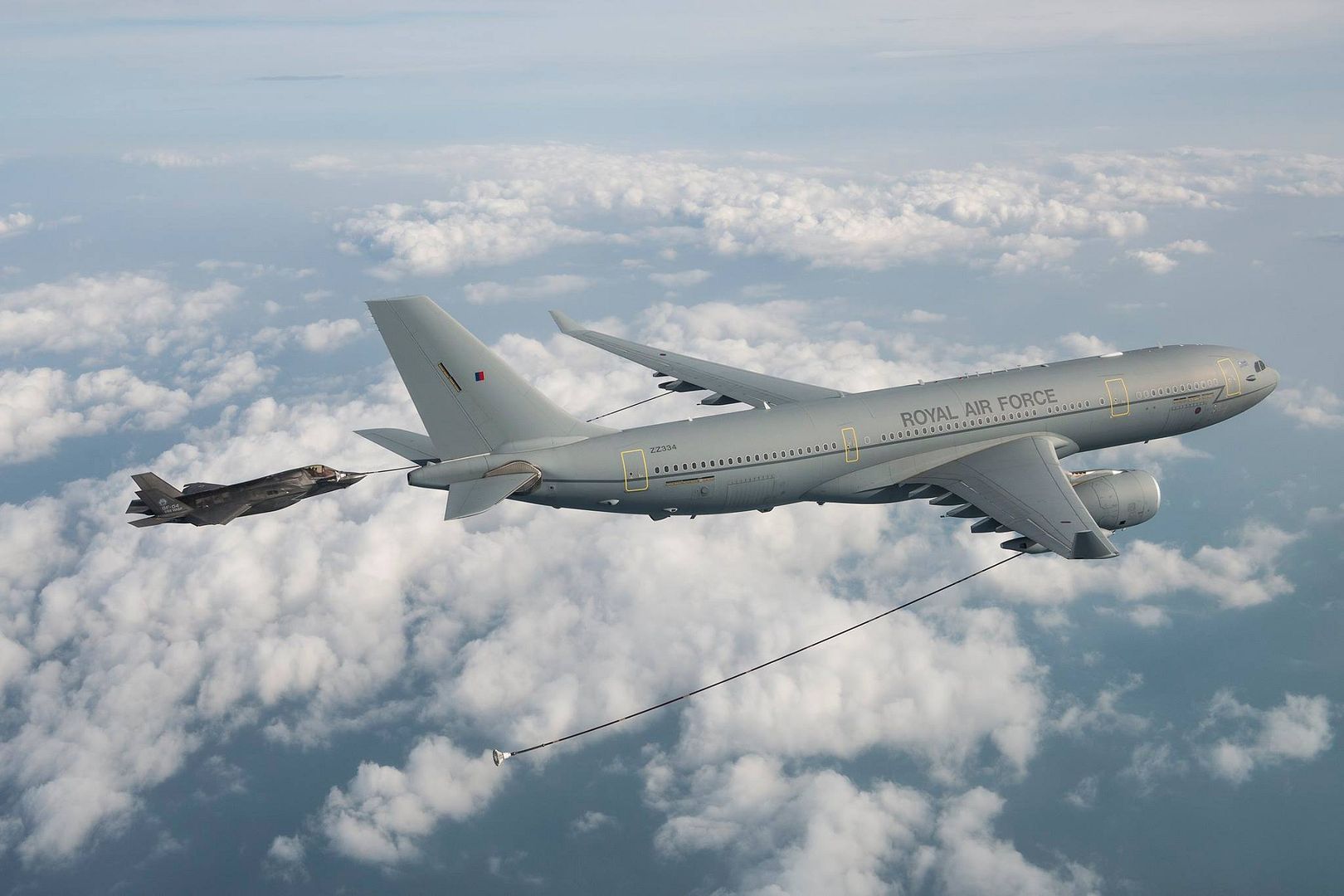
The test flights will allow the collection of a significant amount of data which will be analysed by the Design Organisations of both the Voyager and Lightning II aircraft, and will culminate in the certification of both aircraft, which is scheduled to be delivered by the end of the year. This flight clearance will support Lightning II Initial Operating Capability and the re-location of 617 Squadron to RAF Marham during 2018.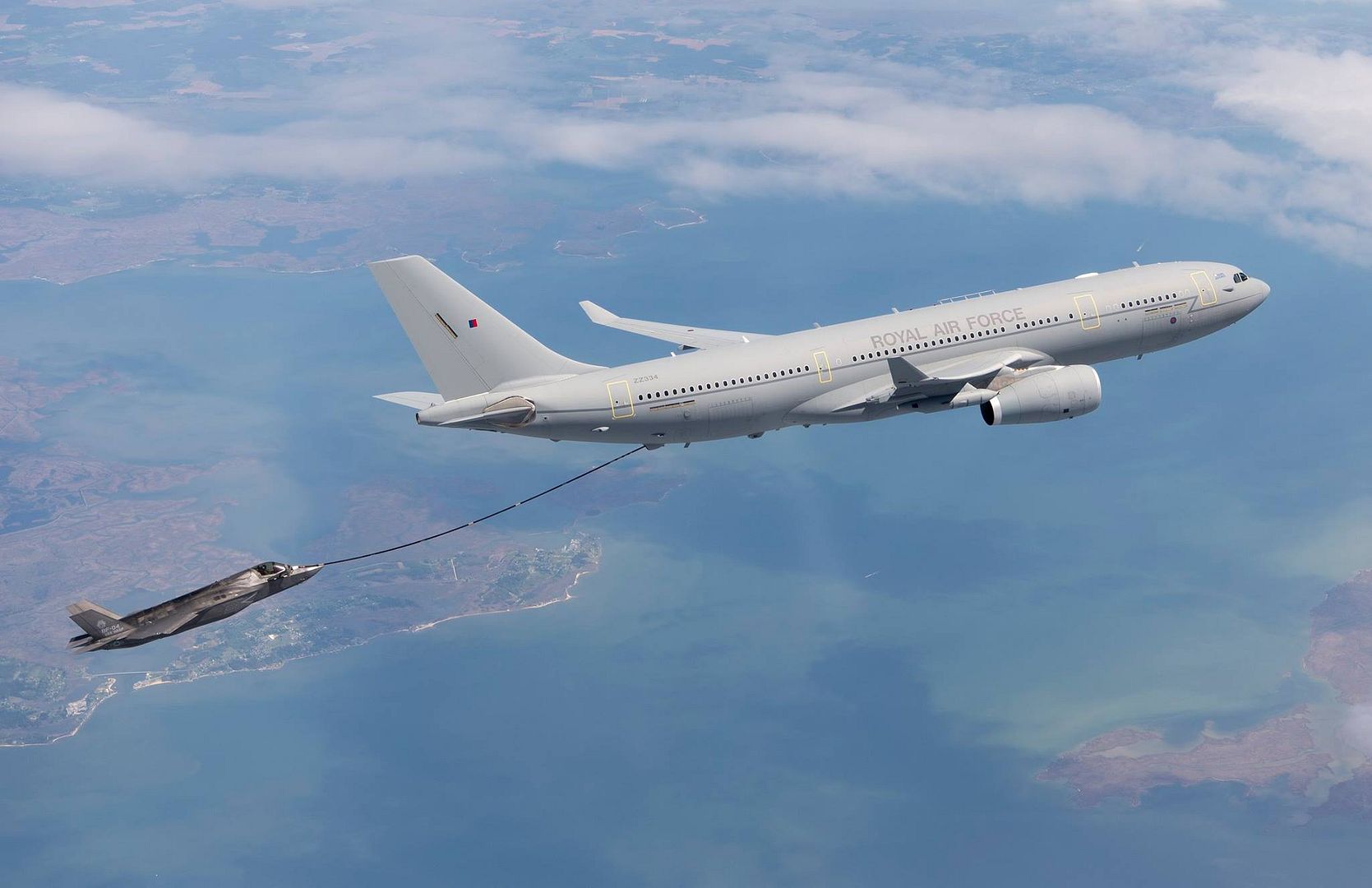
The UK has 19 personnel embedded within the F-35 Development Test Programme at Patuxent River, many of whom are set to embark on a US Marine Corps amphibious vessel later this year for the third and final set of Development Test Sea Trials for the F-35B, ahead of the UK?s own F-35B Ship Integration trials which are scheduled to take place on board HMS Queen Elizabeth in 2018.
The F-35 will make its UK debut this summer at the Royal International Air Tattoo and Farnborough International Air Show.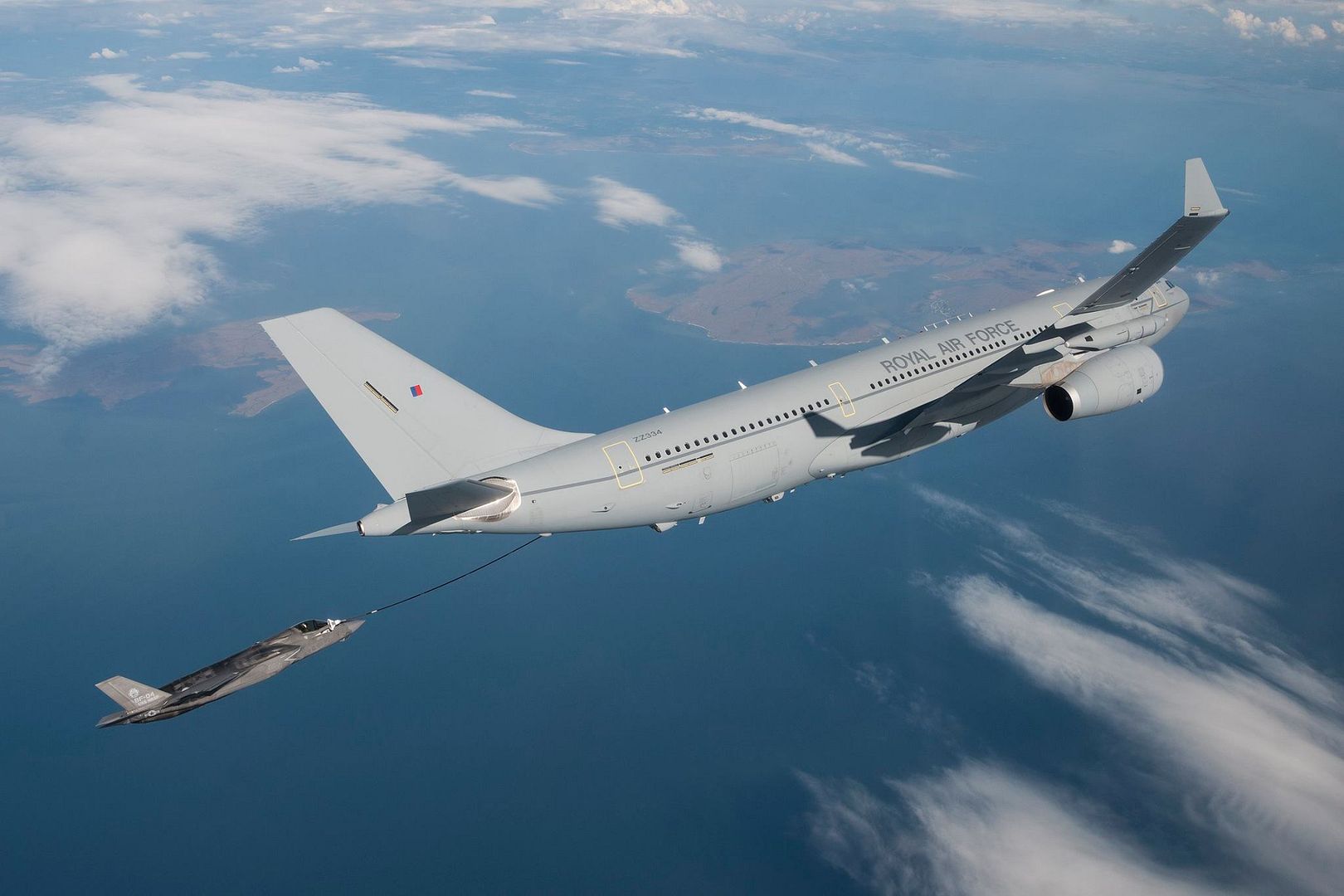
-
 Main AdminThe Ministry of Defence has awarded a ?411 million contract to develop a new missile for the UK?s future F-35B supersonic stealth aircraft.
Main AdminThe Ministry of Defence has awarded a ?411 million contract to develop a new missile for the UK?s future F-35B supersonic stealth aircraft.
The contract secures around 350 highly skilled missile engineering jobs across MBDA?s sites in Stevenage, Bristol and Lostock, with an equivalent number of jobs in the wider supply chain, and will draw on engineering and manufacturing expertise from companies across the UK.
Spear 3 is from the same family of weapons as Brimstone, currently being used by the RAF to combat Daesh in Syria and Iraq, but it packs a bigger punch and has a significantly increased range.
The contract, with MBDA, will enable four years of critical design and development work which will tailor the weapon for use within the internal weapons bay of F-35B, the world?s most advanced combat aircraft.
It is being designed specifically for F-35B Lightning II operations launched from HMS Queen Elizabeth and HMS Prince of Wales, the Royal Navy?s two ?3 billion aircraft carriers.
Defence Minister Philip Dunne, said:
This contract will give UK pilots a state-of-the-art British designed weapon to be used on board our next-generation F-35B jets, with the precision and punch that we need to give decisive operational advantage over our adversaries and keep Britain safe.
This investment is good news not only for our pilots, but also for UK industry, safeguarding 350 highly skilled missile engineering jobs across MBDA?s sites in Stevenage, Bristol and Lostock, and an equivalent number of jobs in the wider supply chain. It has been made possible by this Government?s ?178 billion commitment to the very best equipment for our Armed Forces and by our growing Defence budget.
Spear 3 uses an innovative turbojet engine rather than a tradition rocket motor, giving it a range of more than 60 miles. It was successfully test fired from an MOD Typhoon in March at a range in West Wales.
The ?411 million contract award follows an initial ?150 million assessment phase and, if successful, it is expected that Spear 3 will enter service in the mid-2020s.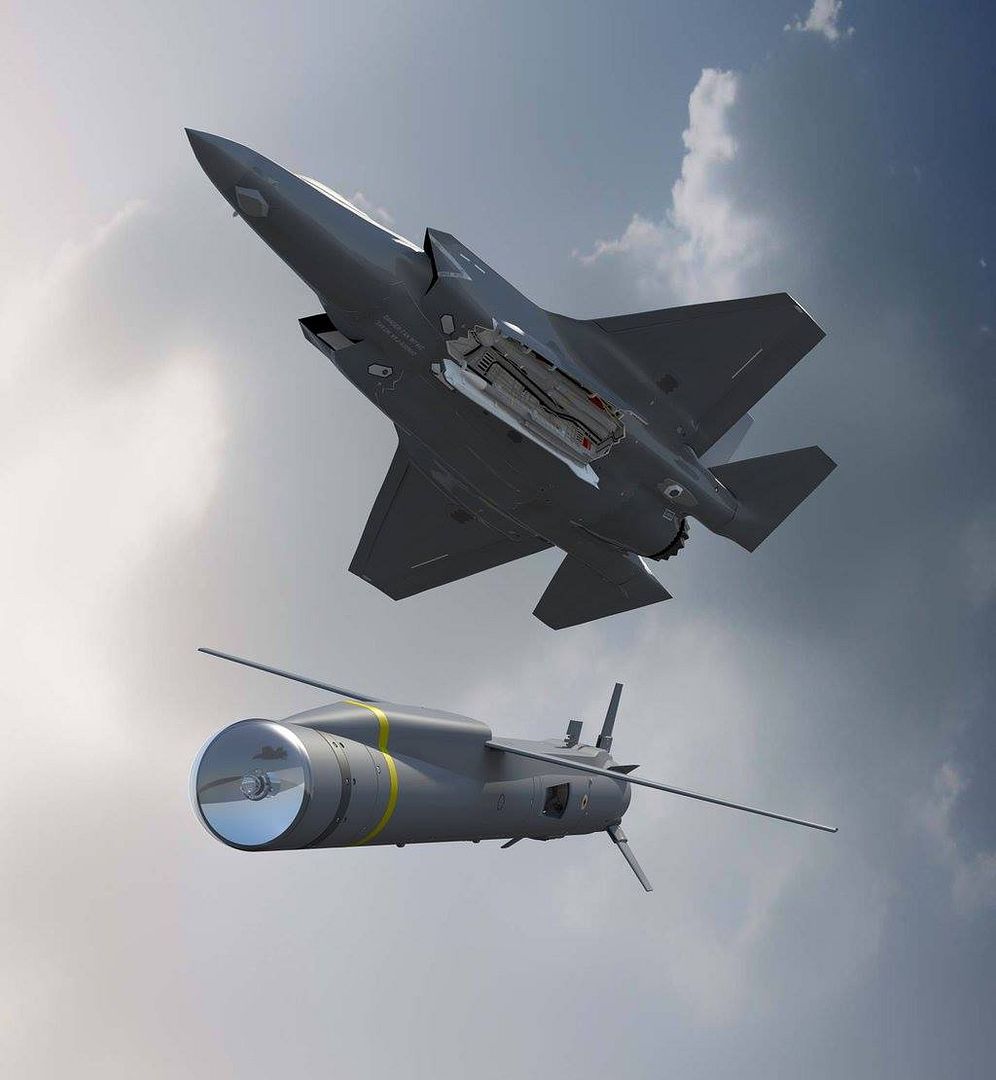
Saab has unveiled its next-generation Gripen E fighter, some three years before delivering its first of at least 96 production examples to the air forces of Sweden and Brazil.
Rolled out at the Swedish manufacturer's Link?ping site in Sweden on 18 May, aircraft 39-8 is the first of three test aircraft which will support the Gripen E programme. It will be handed over to the flight test department at the site "this summer", and is on track to make its debut flight before the end of this year, the company says. It will be used initially to verify the evolved design's general systems, airframe and aerodynamics. The additional two Swedish test assets are already in different stages of structural assembly.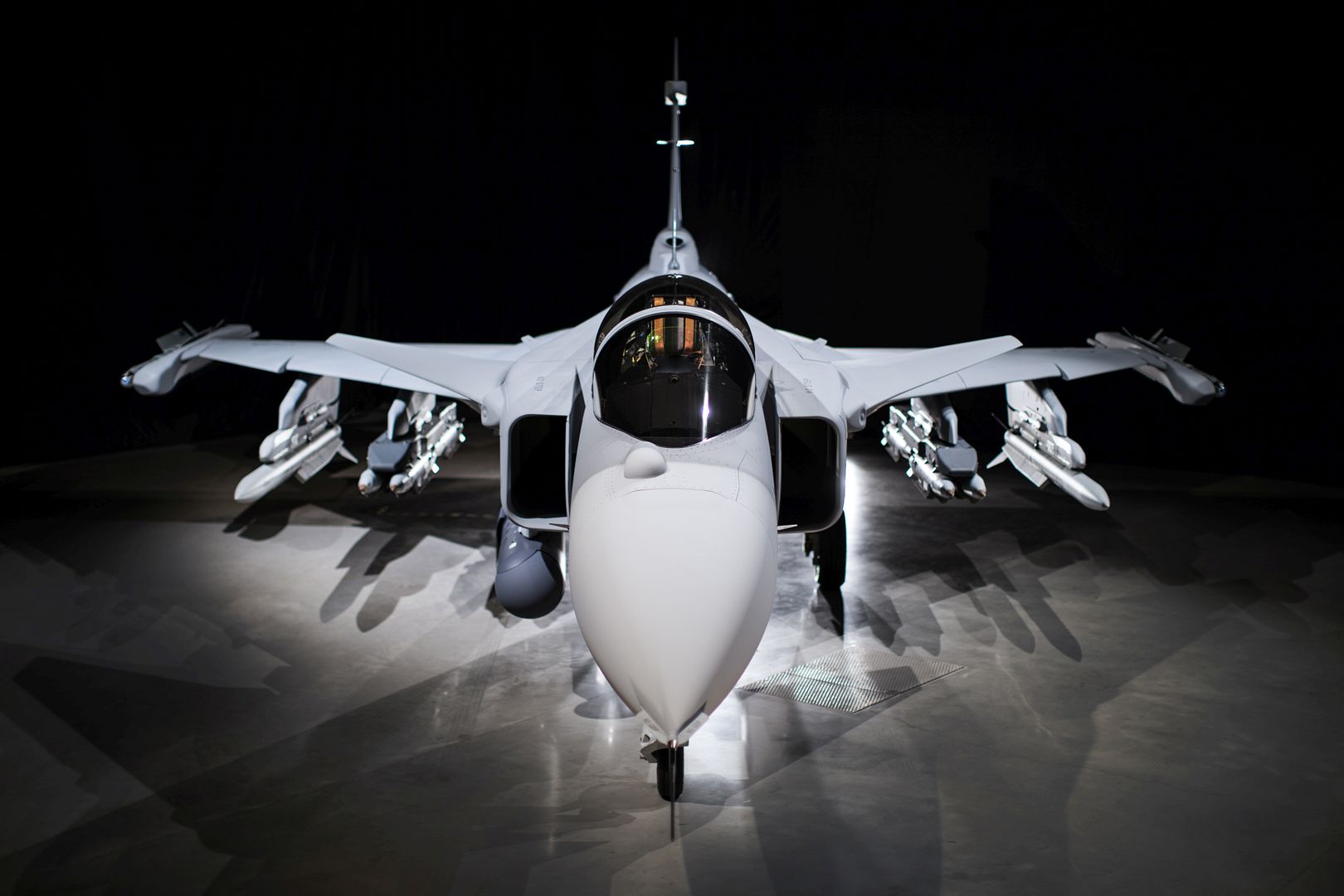
One test aircraft will also be manufactured for Brazil, with this to undergo around one year of flight testing in Sweden before being transferred to a new facility at local partner Embraer's Gavi?o Peixoto site late this decade.
Sweden has ordered 60 Gripen Es, while Brazil will acquire an initial batch of 36: 28 single-seat NG examples and eight twin-seat aircraft, including locally-assembled units.
Speaking at the roll-out, Brazilian air force commander Gen Brig Nivaldo Luiz Rossato described the development of the advanced combat aircraft as "a significant milestone in the history of both countries." He adds: "The Gripen NG will represent a major advance to face any threat to airspace sovereignty. These fighters will be the backbone of the Brazilian air force."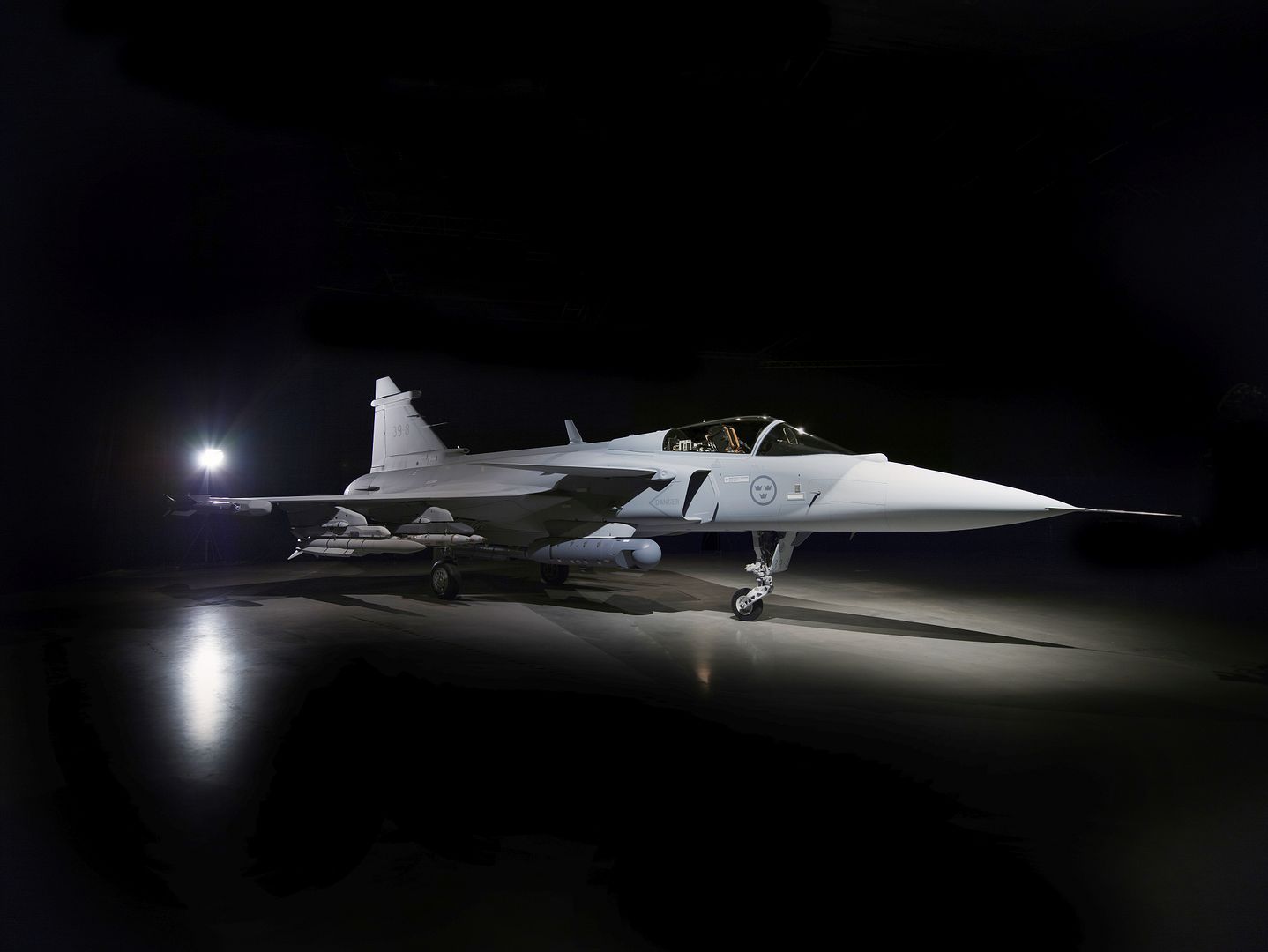
Powered by a GE Aviation F414 turbofan engine, the Gripen E will offer increased range, payload and endurance performance over the legacy Gripen C/D and also have updated avionics, electronic warfare systems and an active electronically scanned array radar.
"This is the only fighter programme on time and on budget," says Ulf Nilsson, Saab's head of aeronautics. Initial operational capability is planned to be achieved by the Swedish air force in 2021, with full capability to be declared two years later.
A U.S. Air Force Precision Flying Demonstration Team - The Thunderbirds - F-16 stands on the flightline at Shaw Air Force Base, S.C., May 17, 2016. The Thunderbirds are one of the many performers scheduled to perform at the 2016 Shaw Air Expo and open house, "Thunder over the Midlands," May 21-22. (U.S. Air Force photo by Airman 1st Class Christopher Maldonado)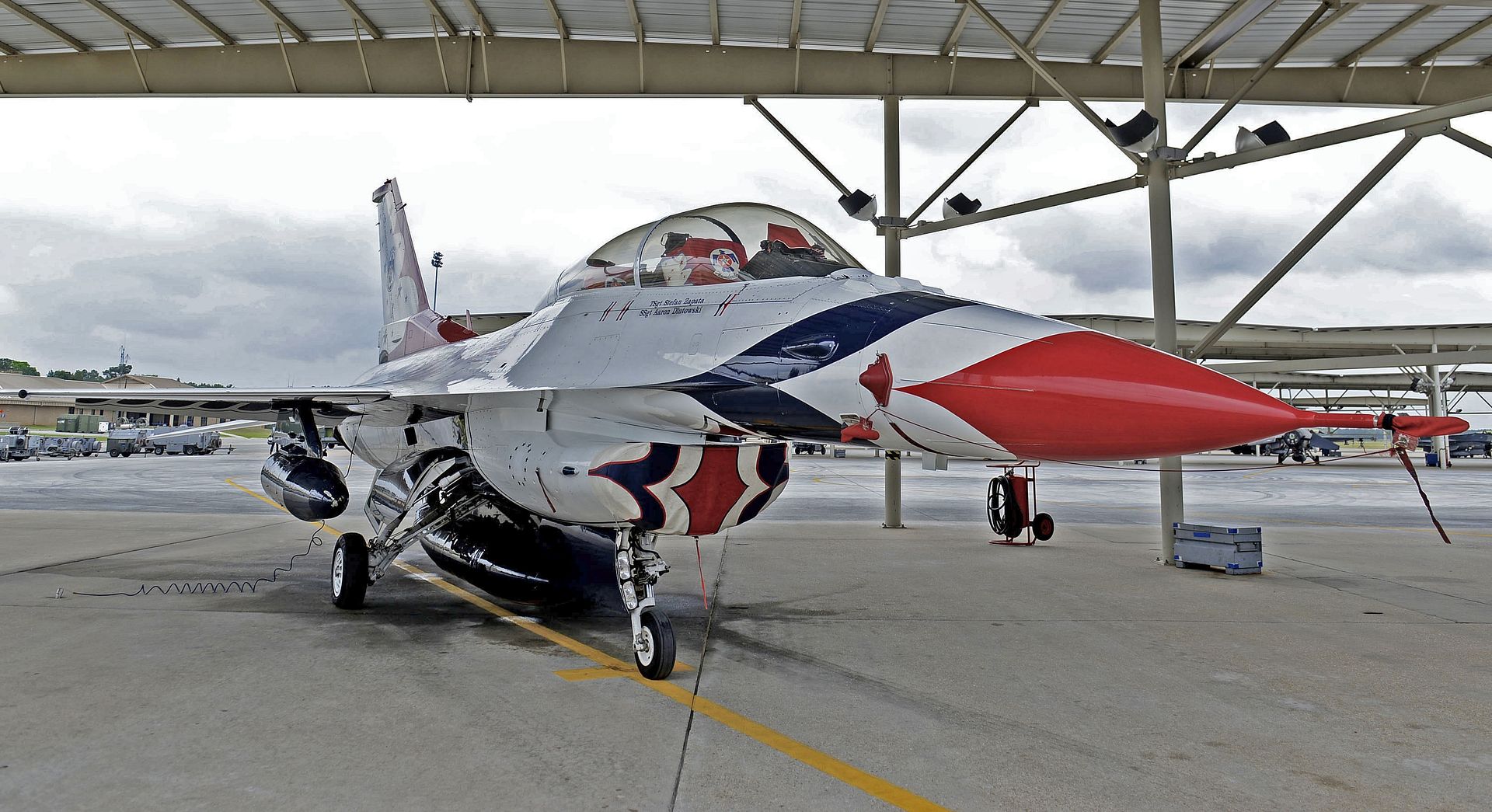
A Jordanian Cobra Helicopter flys toward the target zone during a Quick Reaction Force Training drill during Exercise Eager Lion 2016 near Amman, Jordan, 18 May, 2016. Eager Lion 16 is a bi-lateral exercise in the Hashemite Kingdom of Jordan between the JAF and the U.S. Military designed to strengthen relationships and interoperability between partner nations. (U.S. Army Reserve photo by Spc. Ian Valley 366 Mobile Public Affairs Detachment.)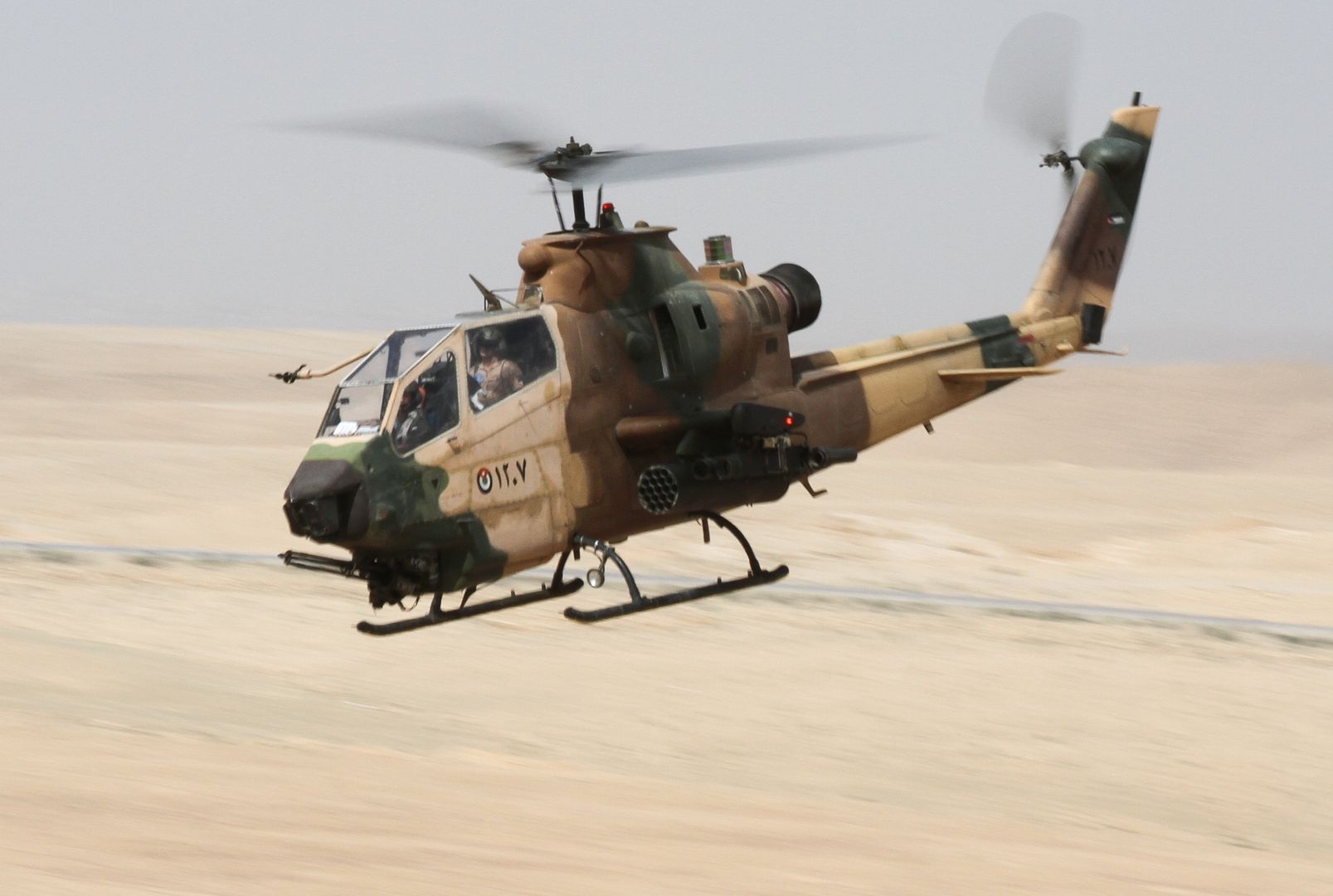
5/18/2016 - A crane lifts an F-102 Delta Dagger toward a pedestal at Heritage Park for display at Joint Base Elmendorf-Richardson, Alaska, May 12, 2016. Anchorage Cranes was contracted by the Air Force to lift the C-130 Hercules and F-102 onto the pedestals, finishing the post-refurbishment move back to Heritage Park. (U.S. Air Force photo by Airman 1st Class Christopher R. Morales)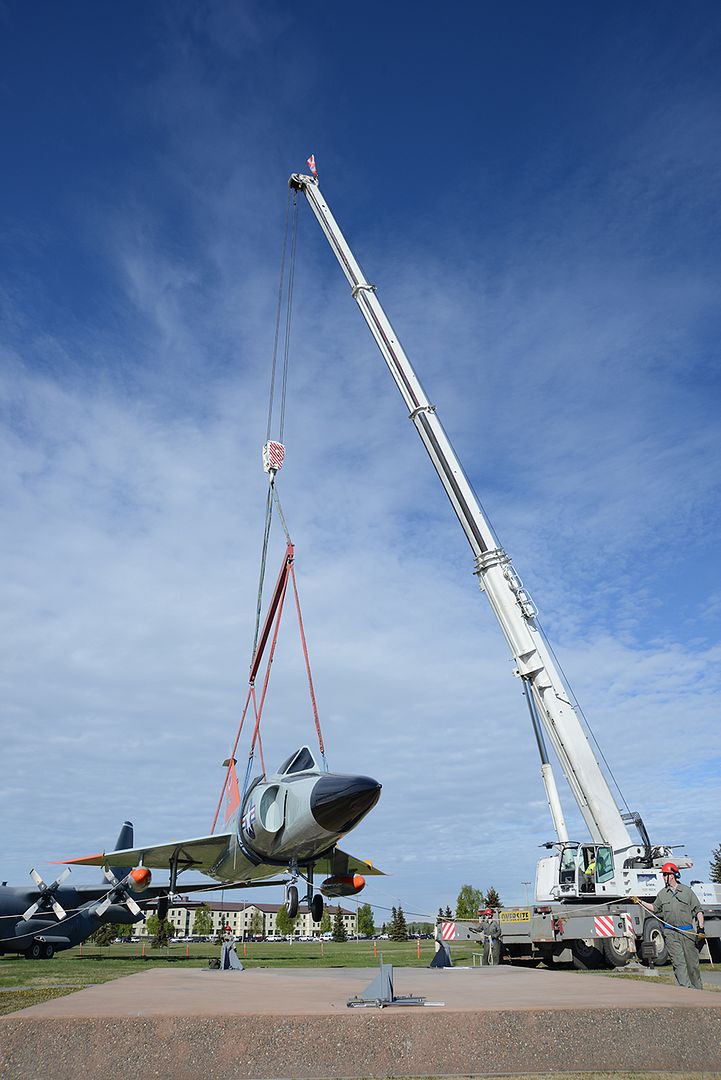
-
 Main AdminSIGONELLA, Sicily (May 19, 2016) A P-3 Orion maritime patrol aircraft from Patrol Squadron (VP) Four taxis at Naval Air Station Sigonella, Sicily in preparation to take off in support of the search for Egyptair flight MS804. The U.S. Navy is providing a P-3 Orion in support of the Hellenic Armed Forces, the Joint Rescue Coordination Center in Greece, in response to a request by the U.S. Embassy in Athens, Greece for assistance in the search of the missing Egyptian aircraft. (U.S. Navy photo by Mass
Main AdminSIGONELLA, Sicily (May 19, 2016) A P-3 Orion maritime patrol aircraft from Patrol Squadron (VP) Four taxis at Naval Air Station Sigonella, Sicily in preparation to take off in support of the search for Egyptair flight MS804. The U.S. Navy is providing a P-3 Orion in support of the Hellenic Armed Forces, the Joint Rescue Coordination Center in Greece, in response to a request by the U.S. Embassy in Athens, Greece for assistance in the search of the missing Egyptian aircraft. (U.S. Navy photo by Mass
Communication Specialist 1st Class Tony D. Curtis/Released)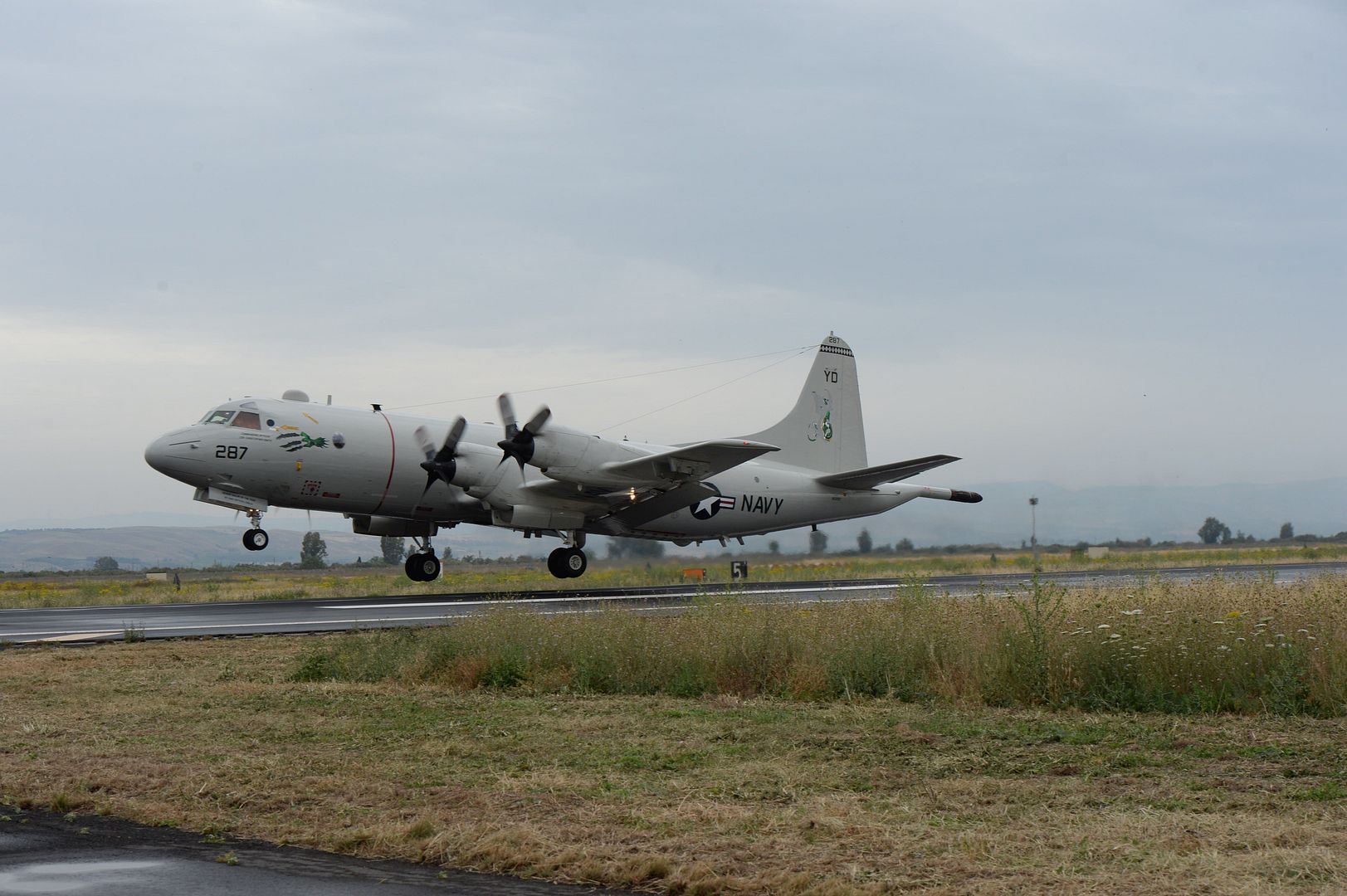
-
 Main AdminA UH-1Y Venom helicopter hovers above a landing zone outside of Robertson Barracks, Northern Territory, Australia, on May 20, 2016. Marines with Marine Rotational Force - Darwin simulated causality evacuations with a UH-1Y Venom helicopter. MRF-D is a six-month deployment of Marines into Darwin, Australia, training in a new environment. The Marines are with Marine Light Attack Helicopter Squadron 367, MRF-D. (U.S. Marine Corps photo by Cpl. Mandaline Hatch/Released)
Main AdminA UH-1Y Venom helicopter hovers above a landing zone outside of Robertson Barracks, Northern Territory, Australia, on May 20, 2016. Marines with Marine Rotational Force - Darwin simulated causality evacuations with a UH-1Y Venom helicopter. MRF-D is a six-month deployment of Marines into Darwin, Australia, training in a new environment. The Marines are with Marine Light Attack Helicopter Squadron 367, MRF-D. (U.S. Marine Corps photo by Cpl. Mandaline Hatch/Released)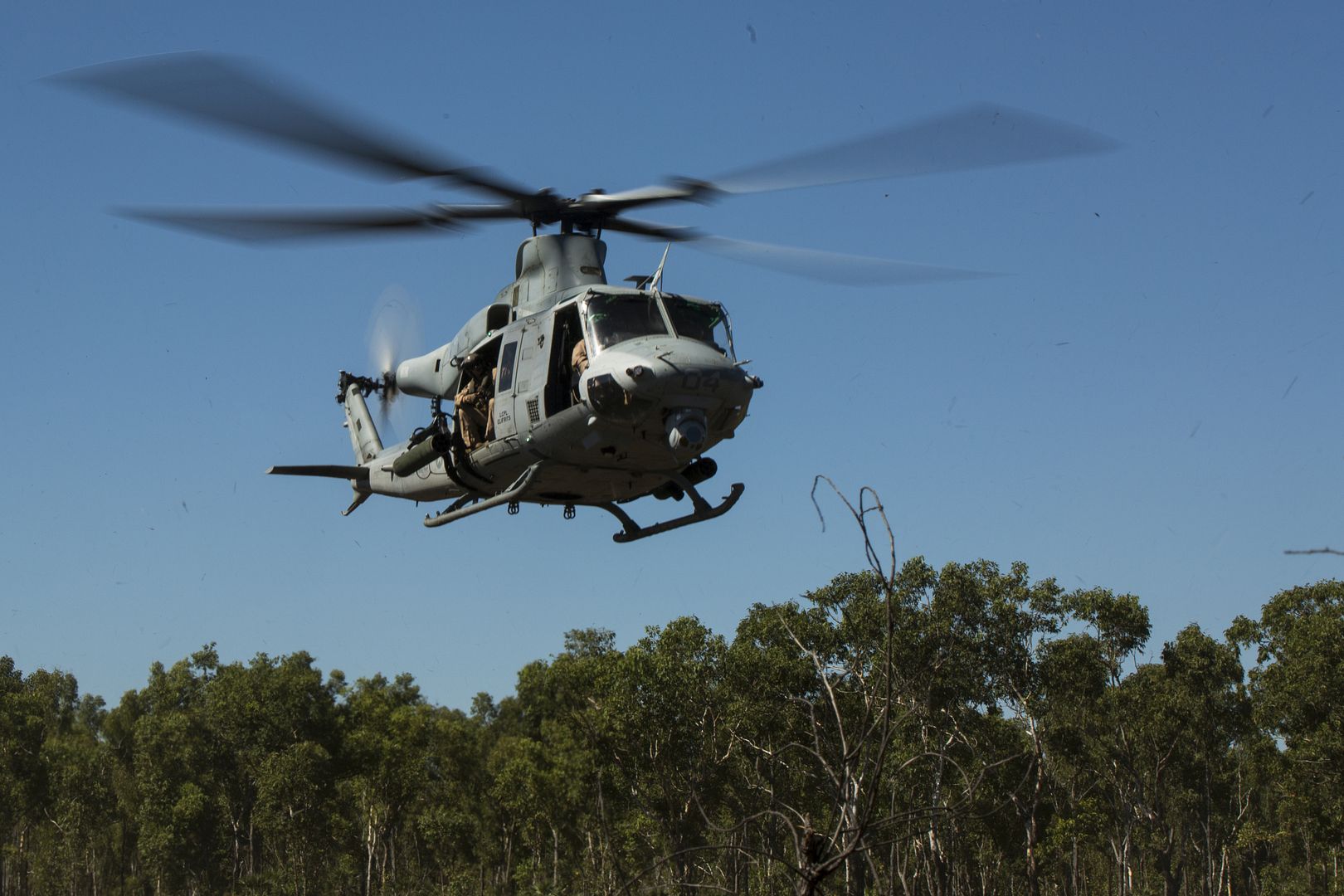
-
 Main AdminUS-based aircraft leasing company Air Lease (ALC) will lease out two new Boeing 787-9 aircraft to Oman Air. To be delivered in 2018 and 2020, the new delivery deal follows Oman Air's announcement last year regarding lease agreements for 14 more aircraft from ALC.
Main AdminUS-based aircraft leasing company Air Lease (ALC) will lease out two new Boeing 787-9 aircraft to Oman Air. To be delivered in 2018 and 2020, the new delivery deal follows Oman Air's announcement last year regarding lease agreements for 14 more aircraft from ALC.
The additional aircraft include three new Boeing 737-800s, seven new Boeing 737-8MAXs, one new Boeing 787-9, one used Boeing 737-700 and two used Boeing 737-800 aircraft. Air Lease executive vice-president Alex Khatibi said: "The strong history and relationship between Oman Air and ALC has further facilitated this transaction."
Established in 1993, Oman Air currently operates a fleet of 39 aircraft serving more than 48 destinations across the Middle East, Europe, Asia and Africa. In January, ALC delivered a next-generation Boeing 737-800 aircraft to Air Vanuatu.
Last December, ALC entered long-term lease agreements with Taiwan-based carrier EVA Air for four new Boeing 787-9s and two new Boeing 787-10 jets. These aircraft are expected to be delivered from mid-2018 through early 2020, bringing the number of new Boeing wide-body aircraft that EVA Air will lease from ALC to ten, including four B777-300ER aircraft already contracted.
MOVED, please post news items here. Thanks Duggy -
 Main AdminMembers of the U.S. Air Force Thunderbirds getting airborne during the Shaw Air Expo and open house, ?Thunder Over the Midlands? at Shaw Air Force Base, S.C., May 22, 2016. (U.S. Air Force photo by Airman 1st Class Kelsey Tucker)
Main AdminMembers of the U.S. Air Force Thunderbirds getting airborne during the Shaw Air Expo and open house, ?Thunder Over the Midlands? at Shaw Air Force Base, S.C., May 22, 2016. (U.S. Air Force photo by Airman 1st Class Kelsey Tucker)
Members of the U.S. Air Force Thunderbirds perform an aerial demonstration during the Shaw Air Expo and open house, ?Thunder Over the Midlands? at Shaw Air Force Base, S.C., May 22, 2016. (U.S. Air Force photo by Airman 1st Class Kelsey Tucker)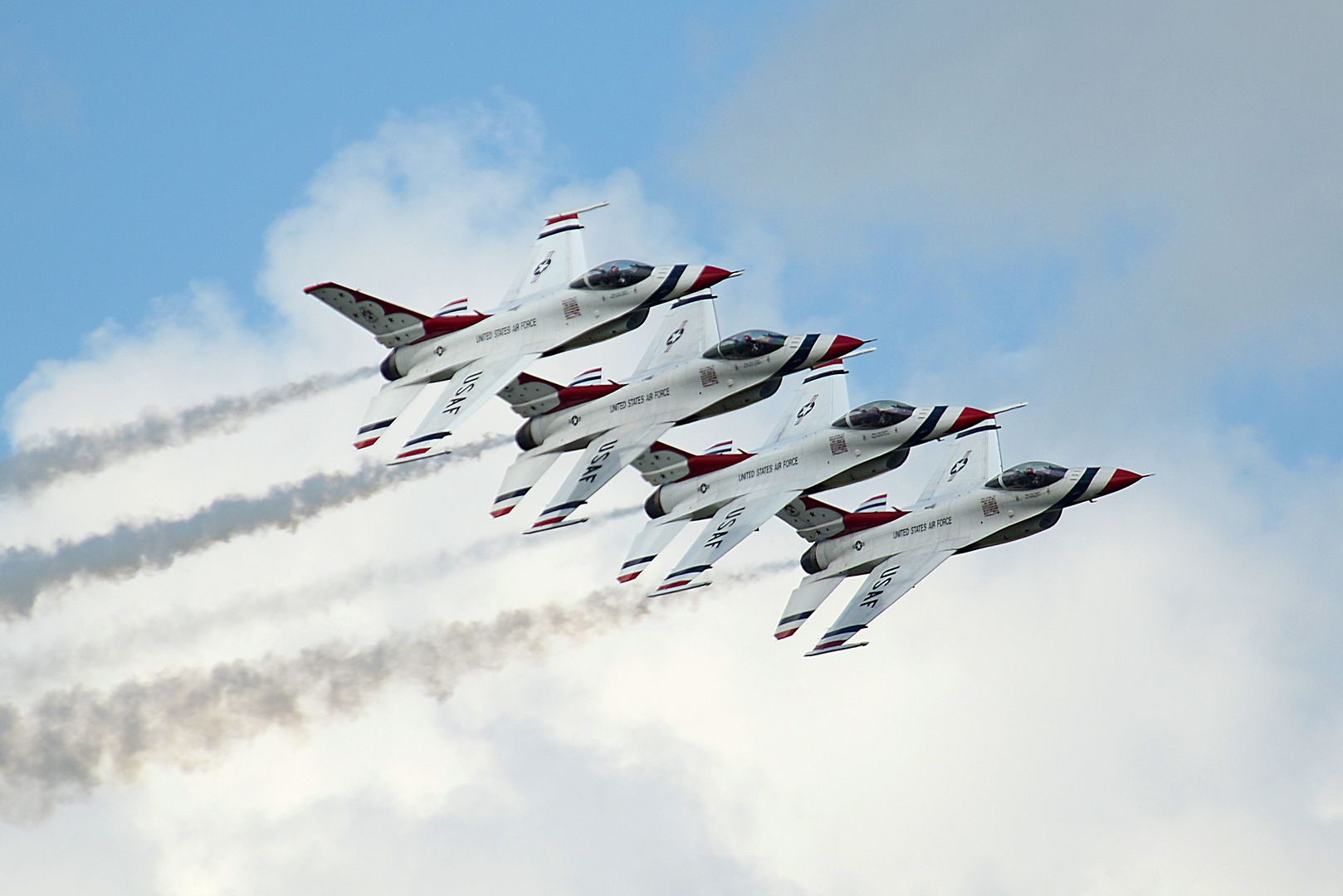
A P-51 Mustang, "Quicksilver", and F-4U Corsair, "Korean War Hero", perform an aerial demonstration during the Shaw Air Expo and open house, ?Thunder Over the Midlands? at Shaw Air Force Base, S.C., May 21, 2016. (U.S. Air Force photo by Airman 1st Class Kelsey Tucker)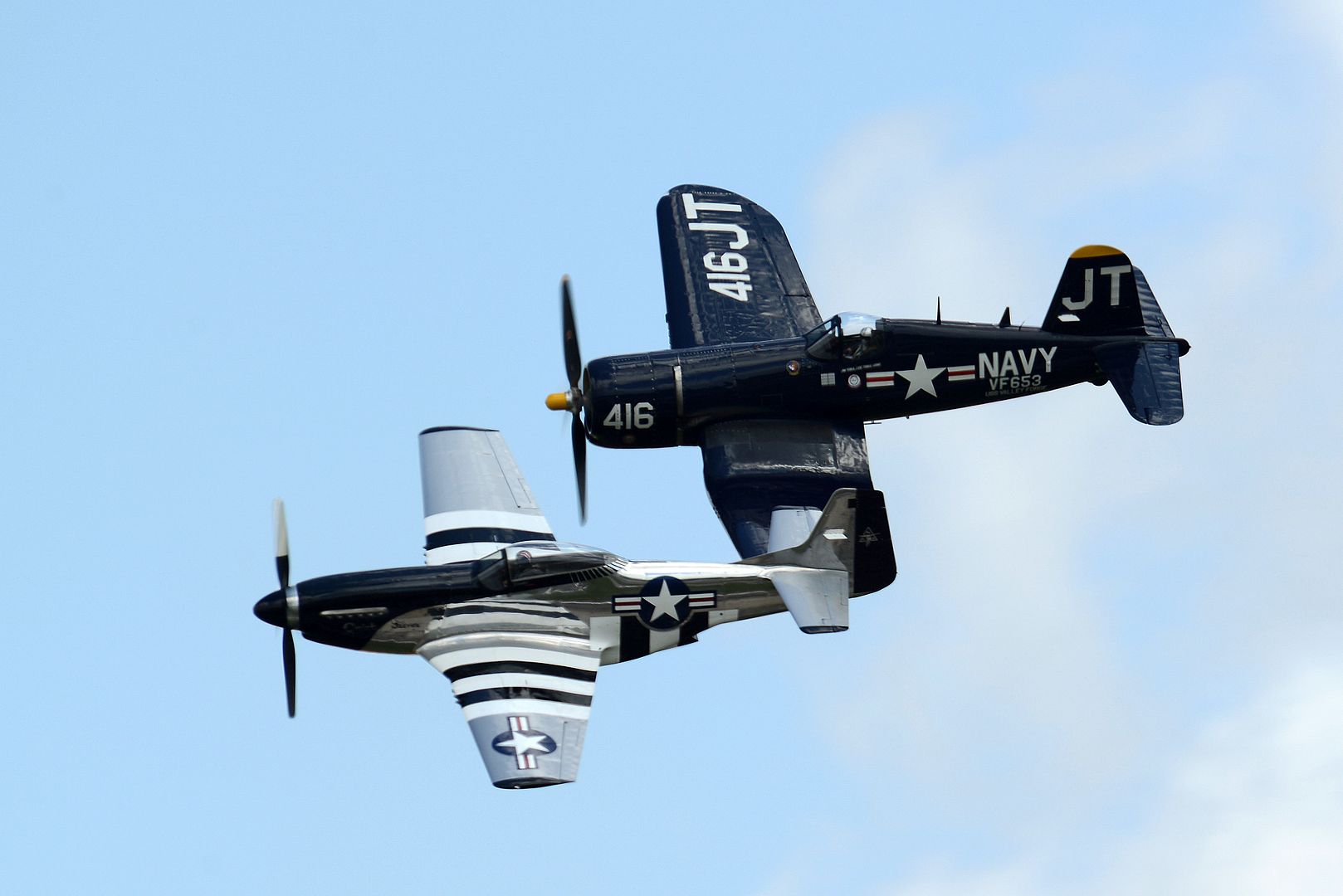
The B-29 "Doc" received its airworthiness certificate from the FAA and it was presented to the Doc's Friends organization during a small ceremony on Friday. The certificate is one of the last hurdles the plane had to clear before making its first flight since 1955. (Travis Heying/The Wichita Eagle)
Read more here: https://www.facebook.com/DocsFriends/photos/pb.148278385338614.-2207520000.1464007700./582726231893825/?type=3&theater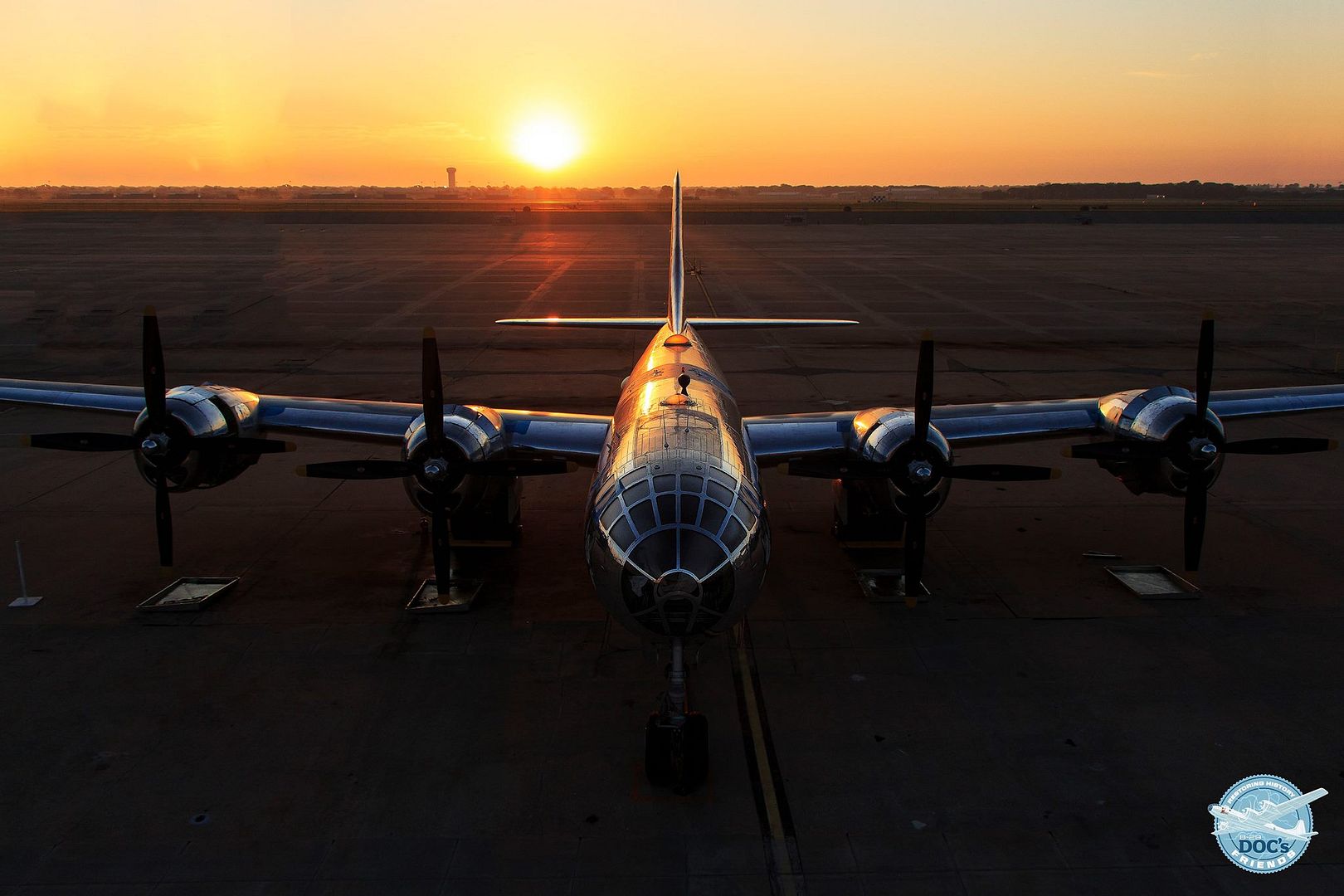
HANOI, May 23, 2016 ? VietJet Aviation Joint Stock Company and Boeing [NYSE: BA] have finalized an order for 100 737 MAX 200 airplanes, the largest ever single commercial airplane purchase in Vietnam aviation. His Excellency Mr. Tr?n ??i Quang, President of the Socialist Republic of Vietnam, and U.S. President Barack Obama, witnessed the historic agreement, valued at approximately $11.3 billion at current list prices.
The signing ceremony, conducted by Vietjet President and CEO Nguy?n Th? Ph??ng Th?o and Boeing Commercial Airplanes President and CEO Ray Conner, took place at the Presidential Palace in Hanoi, at approximately 11:40 a.m. local time.
"Vietjet is efficiently operating a fleet of narrow body airplanes. Our investment in a fleet of B737 Max 200 will accommodate our strategy of growing Vietjet's coming international route network including long haul flights,? said Madam Nguy?n Th? Ph??ng Th?o during the signing. ?Through this agreement, Vietjet will contribute increasing bilateral trade turnover between Vietnam and the United States, as well as the integration and development of the aviation industry in Vietnam.??
The airplanes will be delivered from 2019 through 2023, supporting Vietjet?s continuous growth of its domestic as well as international network in the region. This agreement also helps Vietjet to increase its fleet to more than 200 airplanes by the end 2023, with the most modern and advanced technology in the world.
?Boeing is proud to again play an integral role in advancing Vietnam?s aviation industry. We?re honored to be joined by President Quang and President Obama for this historic milestone and order of 100 737 MAX 200 airplanes,? said Conner. ?Incorporating the latest design and technology features, the highly efficient 737 MAX 200 will provide Vietjet?s growing network with market-leading economics, a superior passenger experience and contribute significantly to their future success.?
The 737 MAX incorporates the latest technology CFM International LEAP-1B engines, Advanced Technology winglets and other improvements to deliver the highest efficiency, reliability and passenger comfort in the single-aisle market. The new single-aisle airplane will deliver 20 percent lower fuel use than the first Next-Generation 737s and the lowest operating costs in its class ? 8 percent per seat less than its nearest competitor. To date, the 737 MAX has accumulated 3,098 orders from 65 customers around the world.
About Vietjet
Vietjet is the first airline in Vietnam to operate as a new-age airline with low-cost and diversified services to meet customers? demands. It provides not only transport services but also uses the latest e-commerce technologies to offer various products and services for consumers. The airline recently won IOSA Certification from the International Air Transport Association (IATA) after just over three years of operations. Vietjet was also declared ?Best Asian Low Cost Carrier? at the TTG Travel Awards 2015, which compiles votes from travelers, travel agencies and tour operators in Asia. The airline was also rated as one of the top three fastest growing airline brands on Facebook in the world by Socialbakers and the most favorite airline in Vietnam in 2015. Currently, the airline operates more than 250 flights each day. It has already operated 50 routes in Vietnam and across the region to international destinations such as Thailand, Singapore, South Korea, Taiwan, China, Myanmar and Malaysia. It has carried approximately 25 million passengers to date. Looking ahead, the airline plans to expand its network across the region. To prepare for this plan, Vietjet has signed agreements with the world?s leading aircraft-manufacturers to purchase more brand-new and modern aircraft.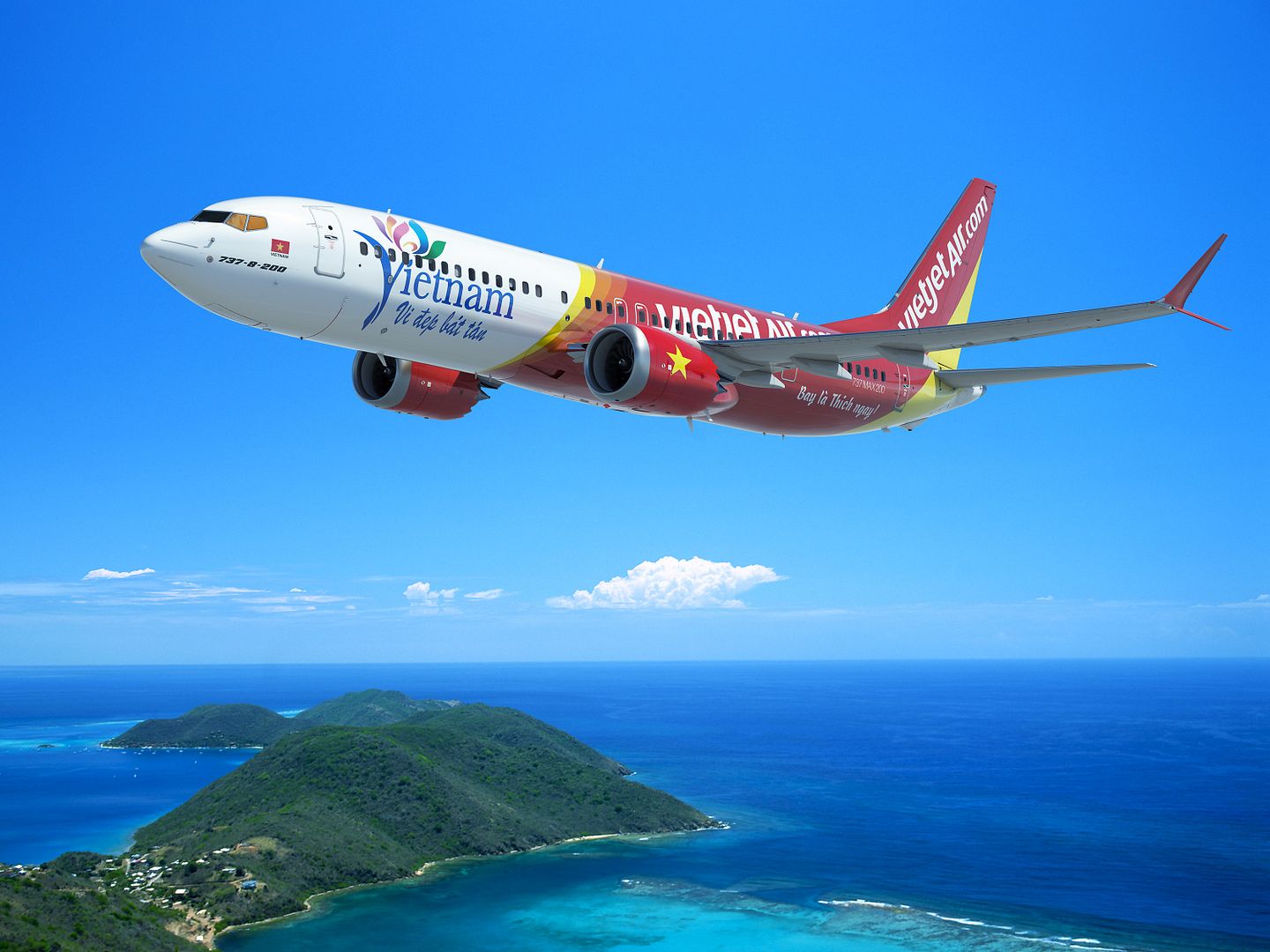
May 23, 2016 Geneva Bombardier Inc., Press Release
VistaJet?s 100th Bombardier aircraft, an all-new Global 6000 business jet, has entered service
VistaJet?s current fleet of more than 60 aircraft is comprised exclusively of mid- and long-range Bombardier business jets
Bombardier Business Aircraft and VistaJet today celebrated an important milestone as the private jet company officially welcomed the 100th Bombardier business jet into the fold. The occasion was marked by a ceremony at the 2016 European Business Aviation Convention & Exhibition (EBACE) in Geneva.
The 100th Bombardier aircraft to be delivered to VistaJet?s modern fleet is a Global 6000 business jet, which entered service earlier this year.
?VistaJet operates the world?s largest privately-owned fleet of Bombardier business aircraft,? said David Coleal, President, Bombardier Business Aircraft. ?We are extremely pleased to celebrate this milestone with one of our most valued customers, and we look forward to the ongoing role our aircraft will play in VistaJet?s bright future.?
VistaJet?s existing fleet of more than 60 Bombardier Challenger and Global aircraft provide exceptional standards of quality, style and service along with point-to-point global coverage for the company's expanding worldwide customer base.
?This is a huge milestone in the history of VistaJet and evidence of just how far our company has come. Over the past 13 years, we have invested billions in modern and efficient Bombardier aircraft. Our fleet has grown from just five jets in 2006 to more than 60 today. In 2006, VistaJet typically served 30 per cent of the globe. Now we regularly serve over 90 per cent of countries worldwide with one-way pricing,? said Thomas Flohr, Founder and Chairman of VistaJet. ?As our worldwide growth continues, we look forward to adding more Bombardier business aircraft to our fleet.?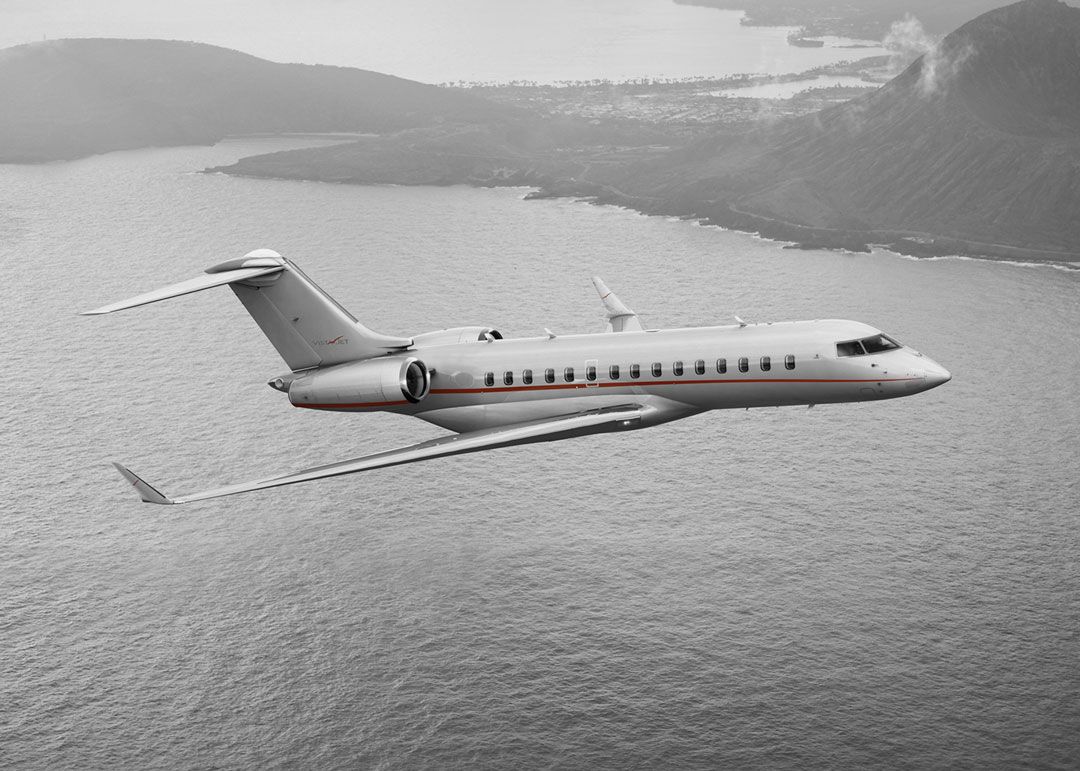
About VistaJet
Founded in 2004 by Thomas Flohr, VistaJet has established itself as the global leader in premium long-range private jet travel by consistently providing excellent service and unrivalled quality to its fast-growing clientele, connecting them to every corner of the world with point-to-point coverage. VistaJet operates a young fleet ? total fleet average age is under two years ? of 60 Bombardier Global and Challenger business aircraft and offers the industry?s largest service area, covering all major markets.
The Company?s unique and successful business model provides all the benefits of owning a personal jet without the responsibilities or asset risk of ownership. Strong and resilient revenue growth, an expanding margin and a sophisticated fleet financing structure are among the drivers for VistaJet to consistently outperform the market in this high-growth segment of the private aviation industry.
VistaJet aircraft have to date visited over 180 countries, landed at 1,480 airports worldwide, logged over 80,000 flights and carried over 210,000 passengers. News and information are available at www.vistajet.com.
Oxford - Airbus Helicopters in the UK has been selected by Ascent as the Aircraft Service Provider for the UK?s Military Flying Training System (UKMFTS). The contract, worth ?500 million over 17 years, will see Airbus Helicopters deliver aircraft and an integrated support solution over the course of 18 months, ready to start training in April 2018. This will involve the manufacture of aircraft in addition to developing the support infrastructure and training initial crews and maintenance personnel.
Over the last 35 years, all UK military helicopter pilots have been trained on Airbus Helicopters, initially with the Gazelle and subsequently with the H125 ?Squirrel?. From 2018 onwards, Airbus Helicopters will support Ascent?s delivery of a key capability for the UK MOD. Helicopters have played a fundamental role in virtually all operational scenarios and theatres for many years and this new capability will prepare 121 pilots and 99 rear crew per year to successfully follow their predecessors.
As part of the contract, Airbus Helicopters will supply a fleet of H135 and H145 capable of delivering the 28,000 hours per year necessary to meet the training requirement. The two types, already a favourite for military helicopter training in the US, Australia and Germany among many other partner nations, incorporate the latest technology, allowing the crews to perform the widest envelope of training from basic flying to offshore, night time operations. Furthermore, through the UKMFTS contract, the UK will be the first country to receive the newly updated H135 Helionix, Airbus Helicopters? advanced avionics kit which increases performance and improves safety.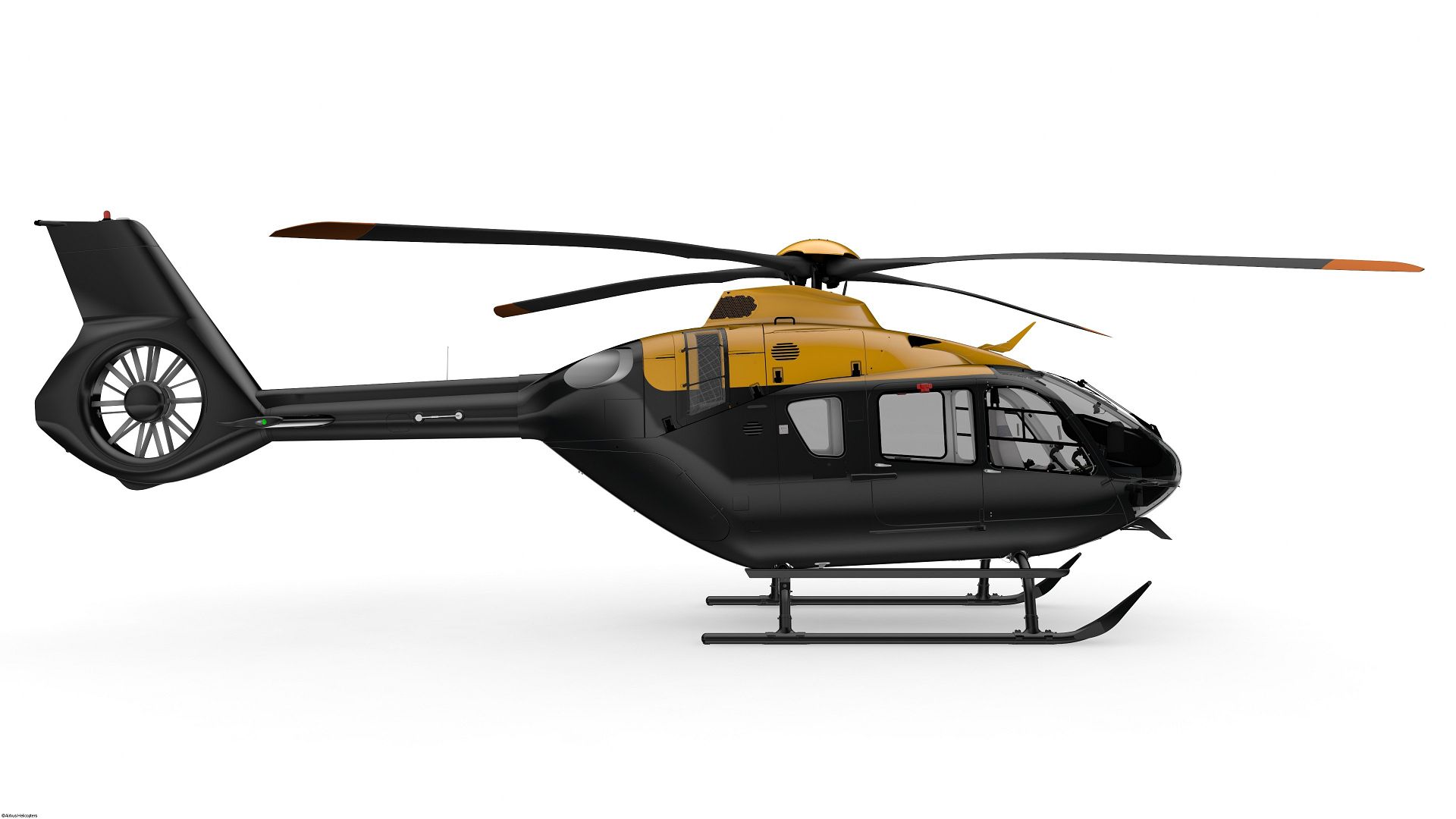
Minister for Defence Procurement, Philip Dunne said: ?This is the final element in re-fashioning the UK Military Flying Training System into a state-of-the-art structure to develop suitably qualified aircrew to secure the future of air elements of our Royal Navy, British Army and Royal Air Force. Our Armed Forces will benefit from consistent, world class training across the board. It will ready them for the next stage of their careers and equip them with the skills they need to deploy on operations around the globe.?
Paul Livingston, Managing Director Ascent said, ?We were left in no doubt that Airbus Helicopters competitive offer was the best choice for the rotary wing element of UKMFTS. I have high expectations of Airbus Helicopters as it is my priority to ensure that this selection provides the UK?s future military aircrew and our instructors the best training solution available.?
Guillaume Faury, CEO of Airbus Helicopters said, ?I welcome Ascent?s decision to entrust the provision of aircraft and full service support to Airbus Helicopters. This builds on our growing strategic relationship with the UK and the British Government, to whom I express my personal thanks, and strengthens the position of the H135 and H145 family of aircraft as the platforms of choice for military flight training worldwide.?
Colin James, Managing Director of Airbus Helicopters in the UK said, ?As demonstrated across the globe, our dedicated focus on customer success, coupled with the outstanding performance of our H135 and H145 aircraft, will ensure that the MOD will benefit from best-in-class training assets. Airbus Helicopters is today Britain?s leading civil helicopter company and, by leveraging our expertise in the development and support of the UK?s emergency, police and military helicopter fleets, our highly skilled British workforce will deliver an unmatched helicopter service provision for UKMFTS.?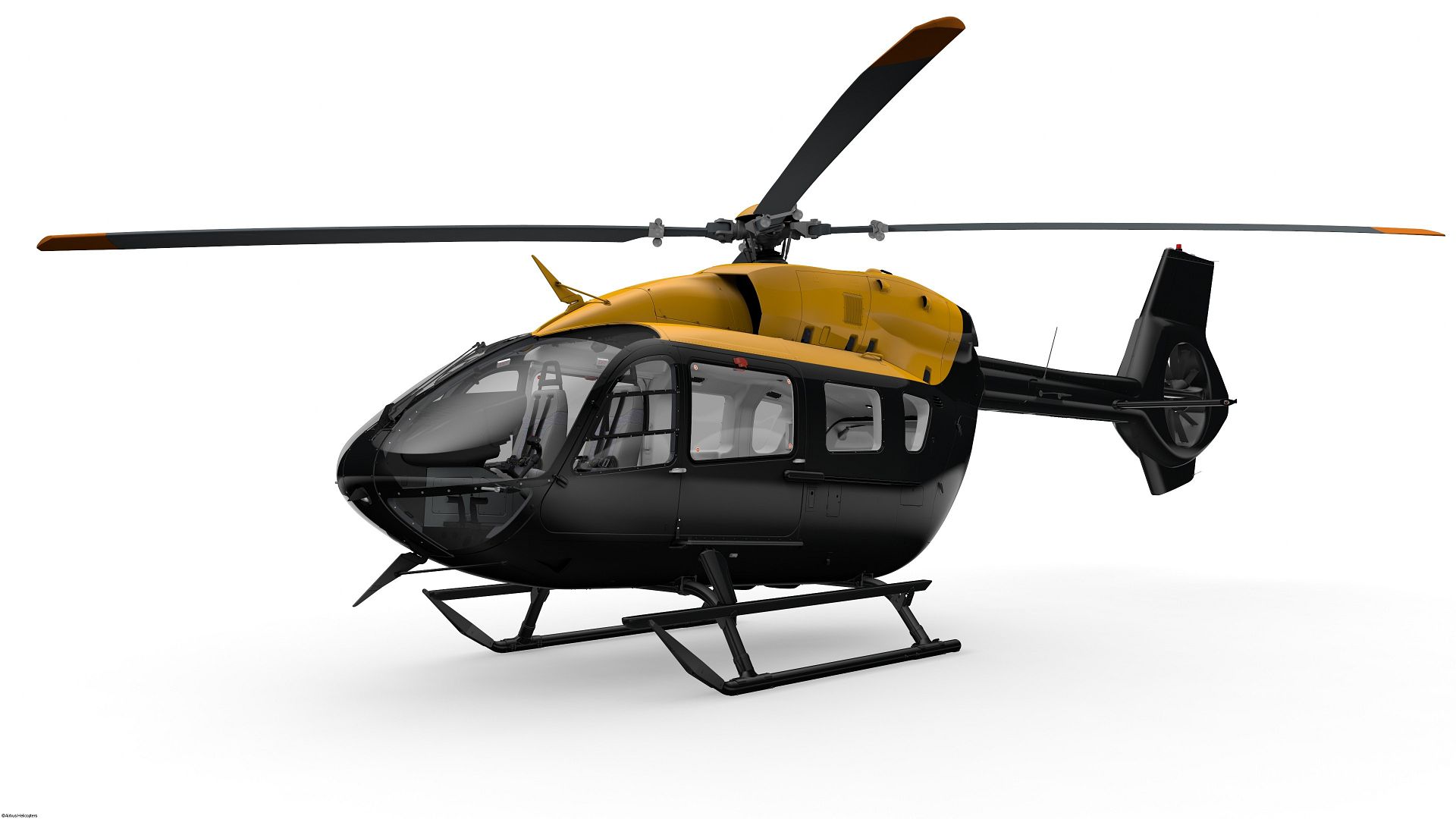
-
9 years ago
 Level 1SpiceJet plans to add more than 100 aircraft to fleet
Level 1SpiceJet plans to add more than 100 aircraft to fleet
India-based budget airline SpiceJet is planning to include more than 100 single-aisle aircraft in the next two to three months in order to meet the increasing local demand.
The carrier currently has a fleet that mostly includes Boeing aircraft. Last November, the airline said that it was negotiating with both Boeing and Airbus to buy more than 150 planes.SpiceJet was also discussing with Bombardier; France-based joint venture ATR; and Brazil's Embraer for 50 additional smaller planes.
In addition, the airliner is also planning to add 14 Bombardier Q400 turboprop planes to expand its fleet of small aircraft, reported Reuters. SpiceJet chairman and managing director Ajay Singh, who took over the struggling airline last year, stated that the company had stabilised its operations and was resolving pending settlements.
Singh was quoted by DNA as saying: "We need to add capacity and we are doing this by way of dry leasing. We will continue to add aircraft on dry lease.
"By June, we would have added six dry lease aircraft, basically as replacement for the wet leased ones." Singh added: "We had inherited a deeply stressed company last year. We are delighted that we have made significant progress both financially and operationally, and have significantly strengthened our balance sheet." -
 Main AdminBATH, Maine --- The Navy accepted delivery of future USS Zumwalt (DDG
Main AdminBATH, Maine --- The Navy accepted delivery of future USS Zumwalt (DDG
1000), the lead ship of the Navy's next-generation of multimission surface combatants, May 20.
DDG 1000 is tailored for sustained operations in the littorals and land attack, and will provide independent forward presence and deterrence, support special operations forces, and operate as an integral part of joint and combined expeditionary forces.
Ship delivery follows extensive tests, trials and demonstrations of the ship's hull, mechanical, and electrical systems including the ship's boat handling, anchor and mooring systems as well as major demonstrations of the damage control, ballasting, navigation and communications systems.
"Today represents a significant achievement for not only the DDG 1000 program and shipbuilding team but for the entire U.S. Navy," said Rear Adm. (select) Jim Downey, DDG 1000 program manager, Program Executive Office Ships. "This impressive ship incorporates a new design alongside the integration of sophisticated new technologies that will lead the Navy into the next generation of capabilities."
The 610-foot, wave-piercing tumblehome ship design provides a wide array of advancements. The shape of the superstructure and the arrangement of its antennas significantly reduce radar cross section, making the ship less visible to enemy radar at sea.
Zumwalt is the first U.S. Navy surface combatant to employ an innovative and highly survivable Integrated Power System (IPS) distributing 1000 volts of direct current across the ship. The IPS' unique architectural capabilities include the ability to allocate all 78 megawatts of installed power to propulsion, ship's service, and combat system loads from the same gas turbine prime movers based on operational requirements.
Each ship in the class features a battery of two Advanced Gun Systems, capable of firing Long-Range Land Attack Projectiles (LRLAP) that reach up to 63 nautical miles, providing three-fold range improvement in naval surface fires coverage. Each ship is equipped with eighty Advanced Vertical Launch System cells for Tomahawk missiles, Evolved Sea Sparrow Missiles, Standard Missiles, and Vertical Launch Anti-Submarine Rockets (ASROC) (VLA).
The ship will employ active and passive sensors and a Multi-Function Radar (MFR) capable of conducting area air surveillance, including over-land, throughout the extremely difficult and cluttered sea-land interface.
Following delivery and a crew certification period at General Dynamics-Bath Iron Works, the ship will be commissioned in Baltimore Oct. 15. Zumwalt will then transit to her homeport in San Diego where Mission Systems Activation will continue in parallel with a Post Delivery Availability.
"Zumwalt's crew has diligently trained for months in preparation of this day and they are ready and excited to take charge of this ship on behalf of the U.S. Navy," said Capt. James Kirk, commanding officer of future Zumwalt. "These are 143 of our nation's finest men and women who continue to honor Adm. Zumwalt's namesake with their dedication to bringing this ship to life."
BIW is also constructing follow-on ships, the future Michael Monsoor (DDG 1001) and Lyndon B. Johnson (DDG 1002).
(Source: Sputnik News; published May 21, 2016)
The Russian Defense Ministry presented the A-50U -- the Aerospace Forces' most advanced airborne early warning and control aircraft (AEW&C, or AWACS) -- at an air base in the Ivanovo Region.
The plane is meant for detecting and tracking a number of aerial (fighter jets, bombers, ballistic and cruise missiles), ground (tank columns) and surface (above-water vessels) targets, informing command centers about the developments in the air and sea, and directing fighter and strike aviation.
It can also serve as a command center itself.
The A-50 plane is in essence a giant flying data processing center. It is literally stuffed with equipment which is operated by 10 men. The aircraft can also protect itself by means of electronic warfare. It has an aerial refueling system.
The main feature of the aircraft is its circular rotating radar (rotodome), dubbed "mushroom" by its crews, above the fuselage. If the automatic system fails, an operator can rotate the radar with a special handle.
The A-50U, which made its maiden flight in 2011, is a further derivative of the A-50, which has been in service since 1989. The A-50 can spot targets at a distance of 800 kilometers and has an operational range of 7,500 kilometers.
In contrast with its predecessor, the A-50U is "sharper-sighted," can transfer data better and fly farther. Its exact characteristics are kept secret.
The A-50 has participated in different campaigns over 25 years. For example, the plane was used in the operation to eliminate Dzokhar Dudayev, the leader of terrorists in the First Chechen War, on April 21, 1996. An A-50 detected Dudayev's location by intercepting his phone call, and seconds later a Su-24 bomber destroyed the terrorist with a Kh-25 missile.
Reportedly, the Russian Aerospace Forces currently maintain a fleet of 15 A-50 and three A-50U planes.
Post a reply
- Go to Next topic
- Go to Welcome
- Go to Introduce Yourself
- Go to General Discussion
- Go to Screenshots, Images and Videos
- Go to Off topic
- Go to Works in Progress
- Go to Skinning Tips / Tutorials
- Go to Skin Requests
- Go to IJAAF Library
- Go to Luftwaffe Library
- Go to RAF Library
- Go to USAAF / USN Library
- Go to Misc Library
- Go to The Ops Room
- Go to Made in Germany
- Go to Campaigns and Missions
- Go to Works in Progress
- Go to Juri's Air-Raid Shelter
- Go to Campaigns and Missions
- Go to Works in Progress
- Go to Skinpacks
- Go to External Projects Discussion
- Go to Books & Resources
